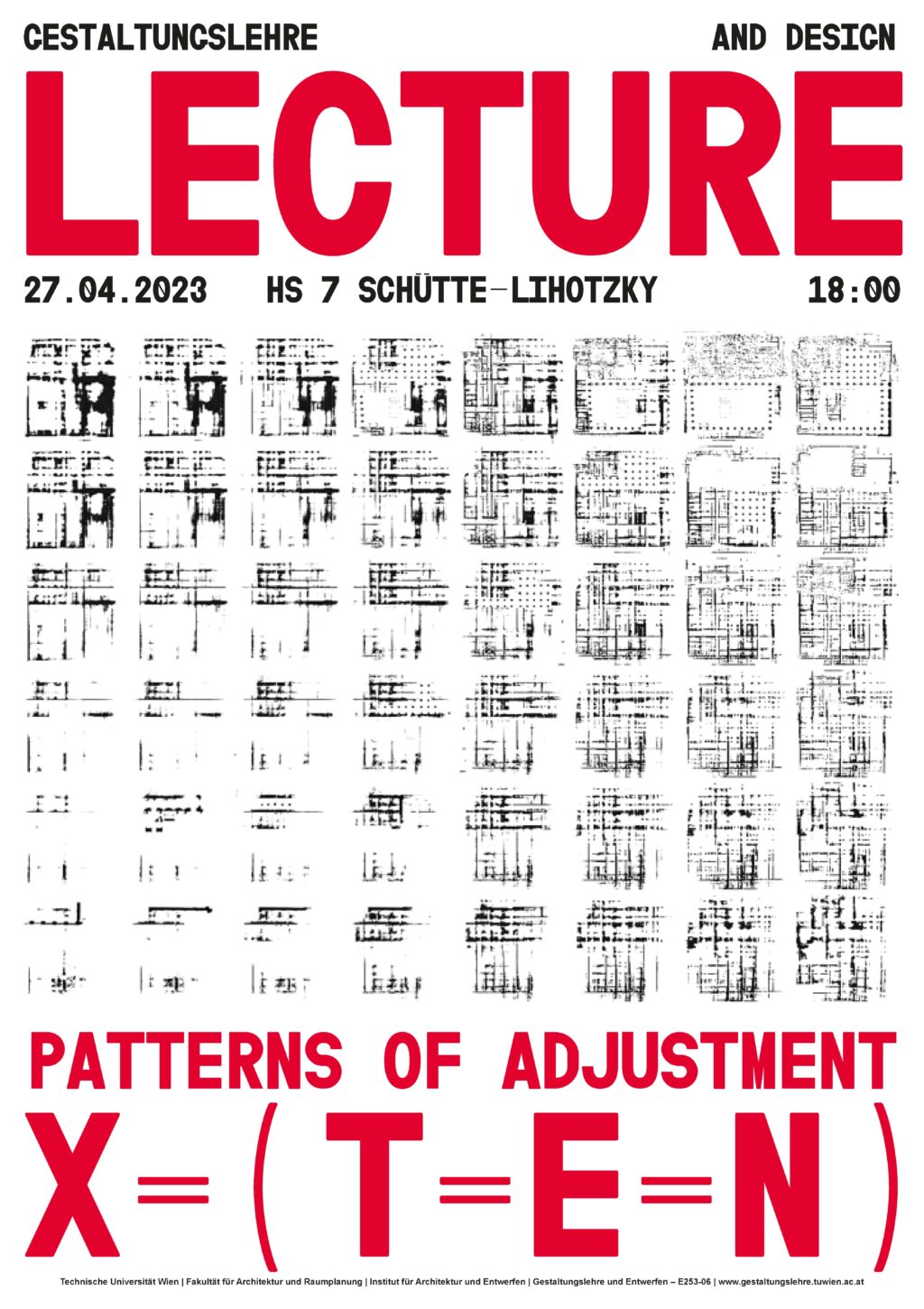

LECTURE:
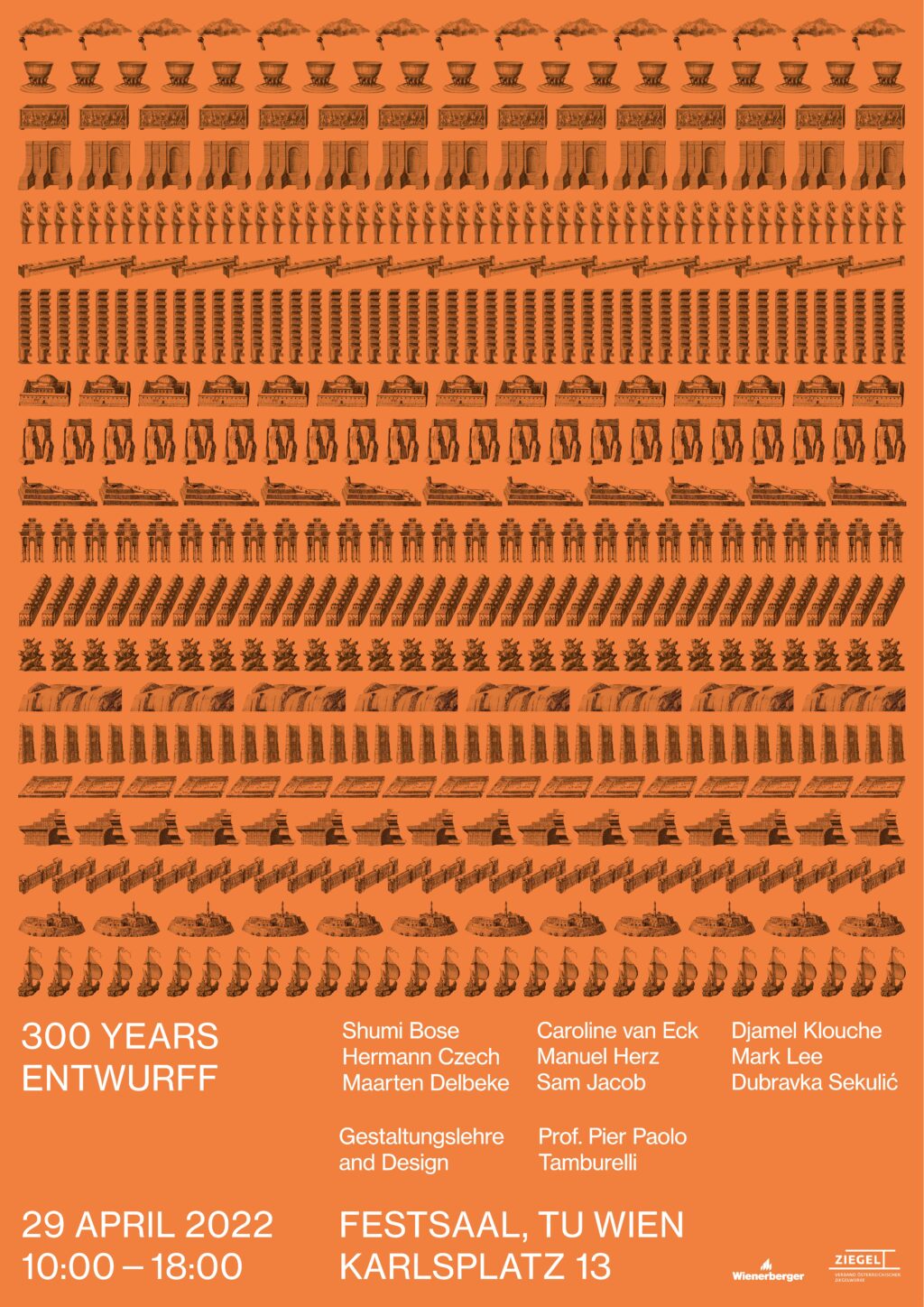
APR 29, 2022
10:00
Symposium:
300 Years EntwurfF
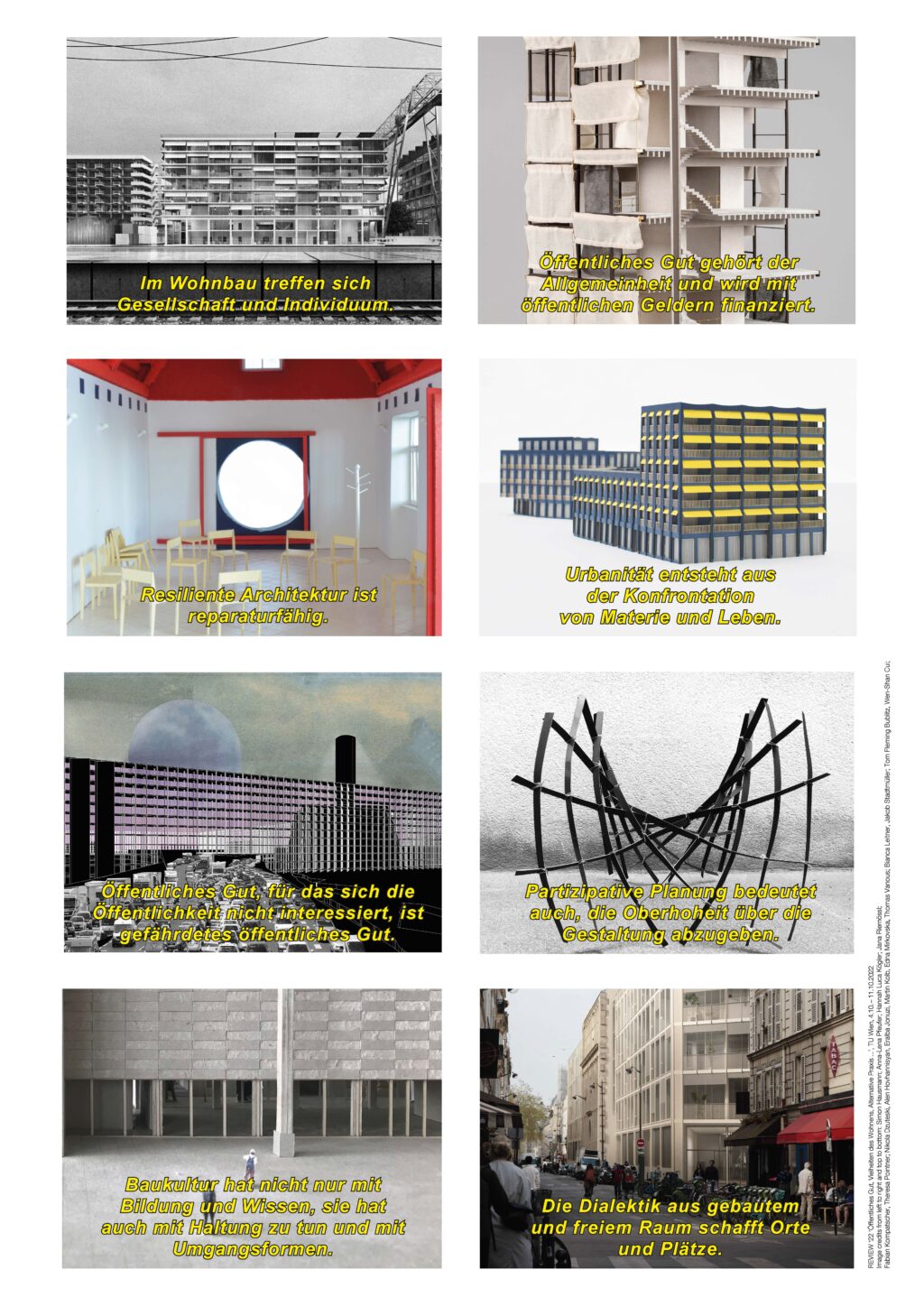
OCT 4, 2022
18:00
EXHIBITION:
REVIEW ‘22

NOV 7, 2022
21:00
LECTURE:
Kjetil Trædal Thorsen, Snøhetta
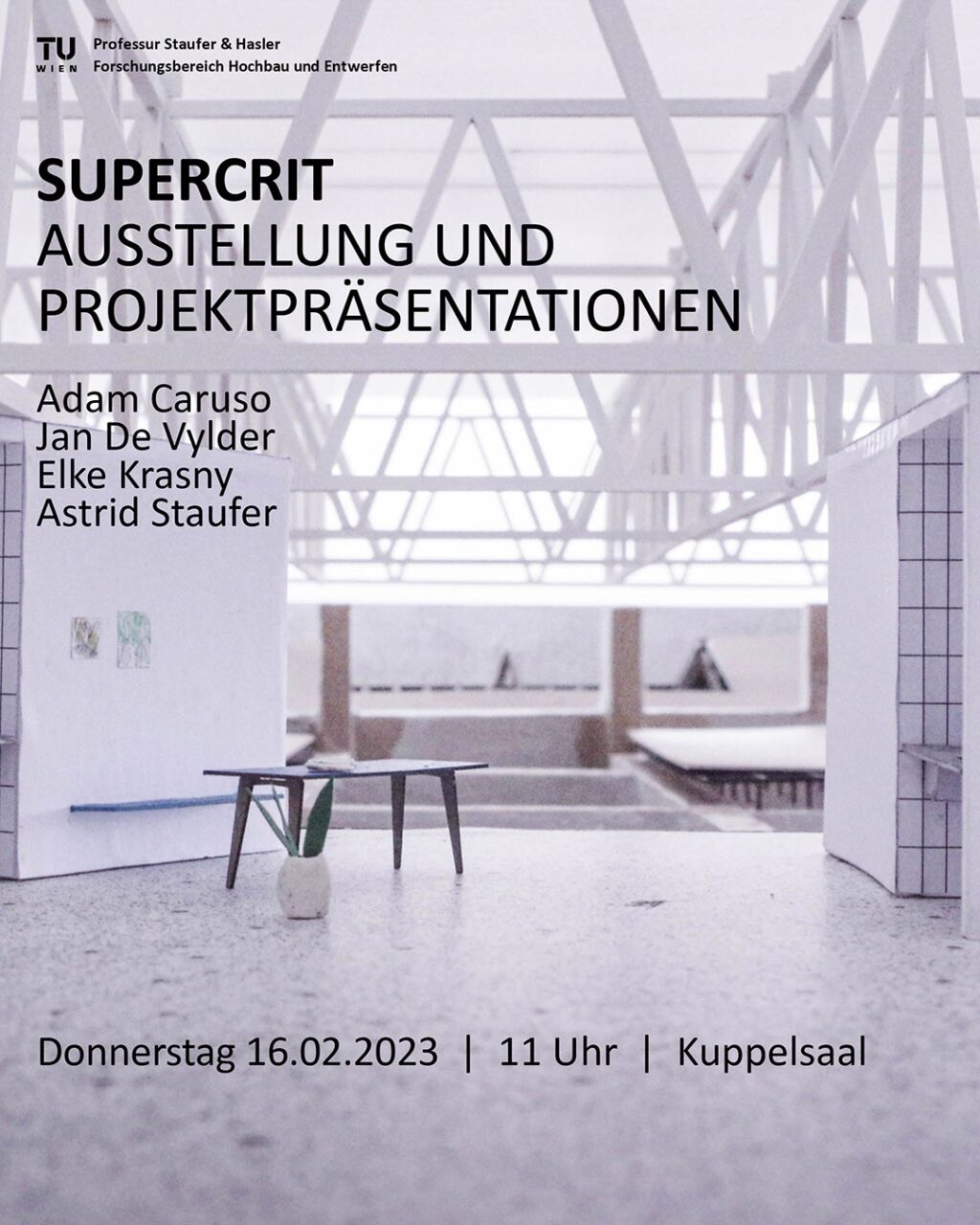
FEB 16, 2023
11:00
EXHIBITION & SUPERCRIT:
UMBAU IN DER LEHRE

MAR 9, 2023
18:30
LECTURE:
GABU HEINDL
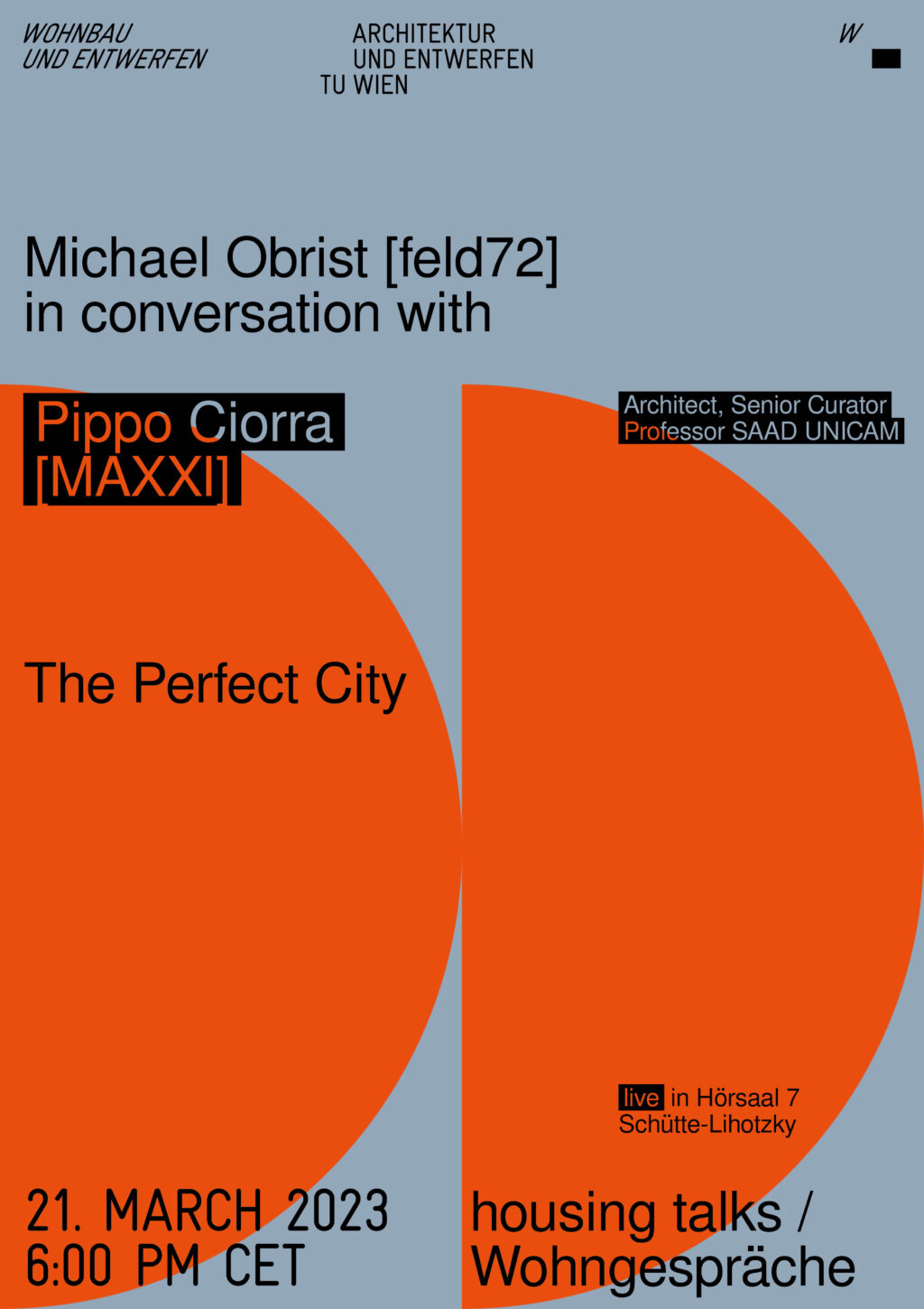
MAR 21, 2023
18:00
HOUSING TALKS:
PIPPO CIORRA, MAXXI
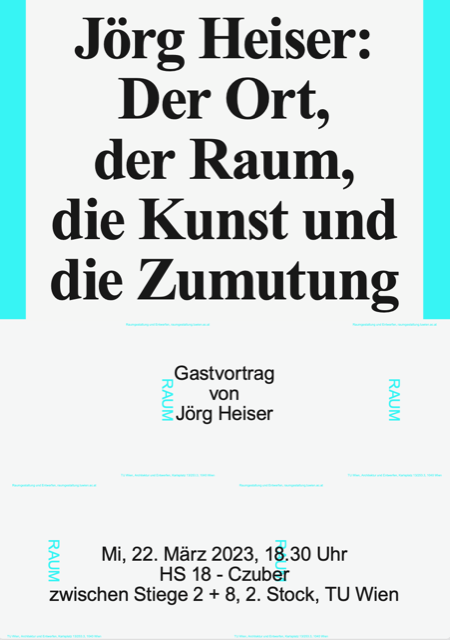
MAR 22, 2023
18:30
LECTURE:
JÖRG HEISER
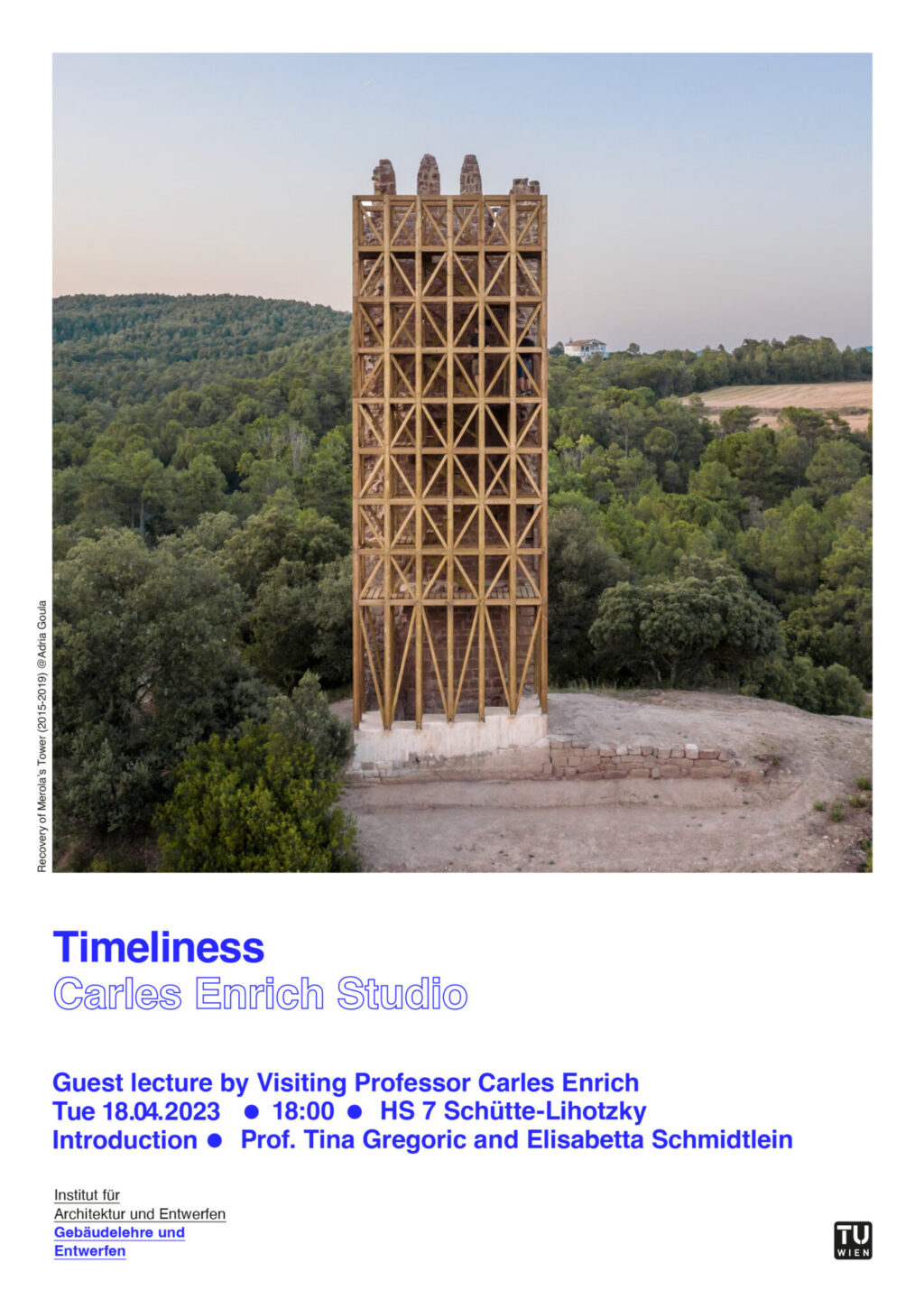
APR 18, 2023
18:00
LECTURE:
CARLES ENRICH

APR 19, 2023
18:30
LECTURE:
HEIKE MAIER-RIEPER
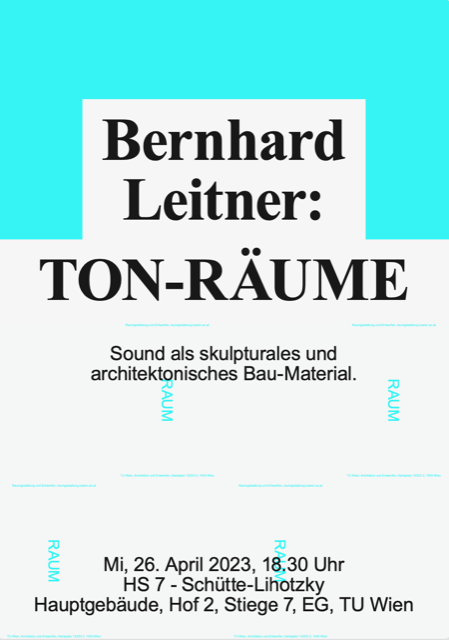
APR 26, 2023
18:30
LECTURE:
BERNHARD LEITNER
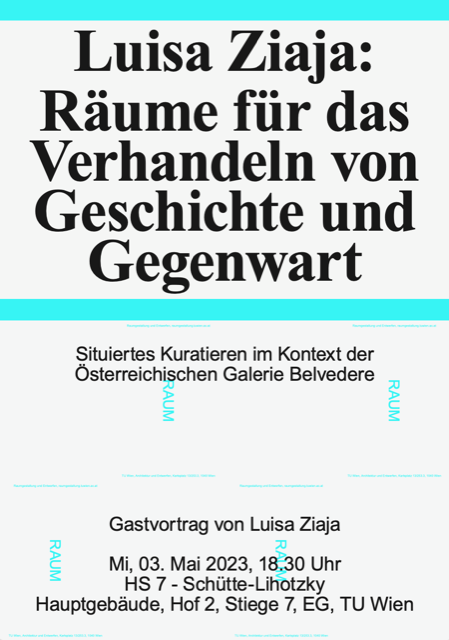
MAY 3, 2023
18:30
LECTURE:
LUISA ZIAJA
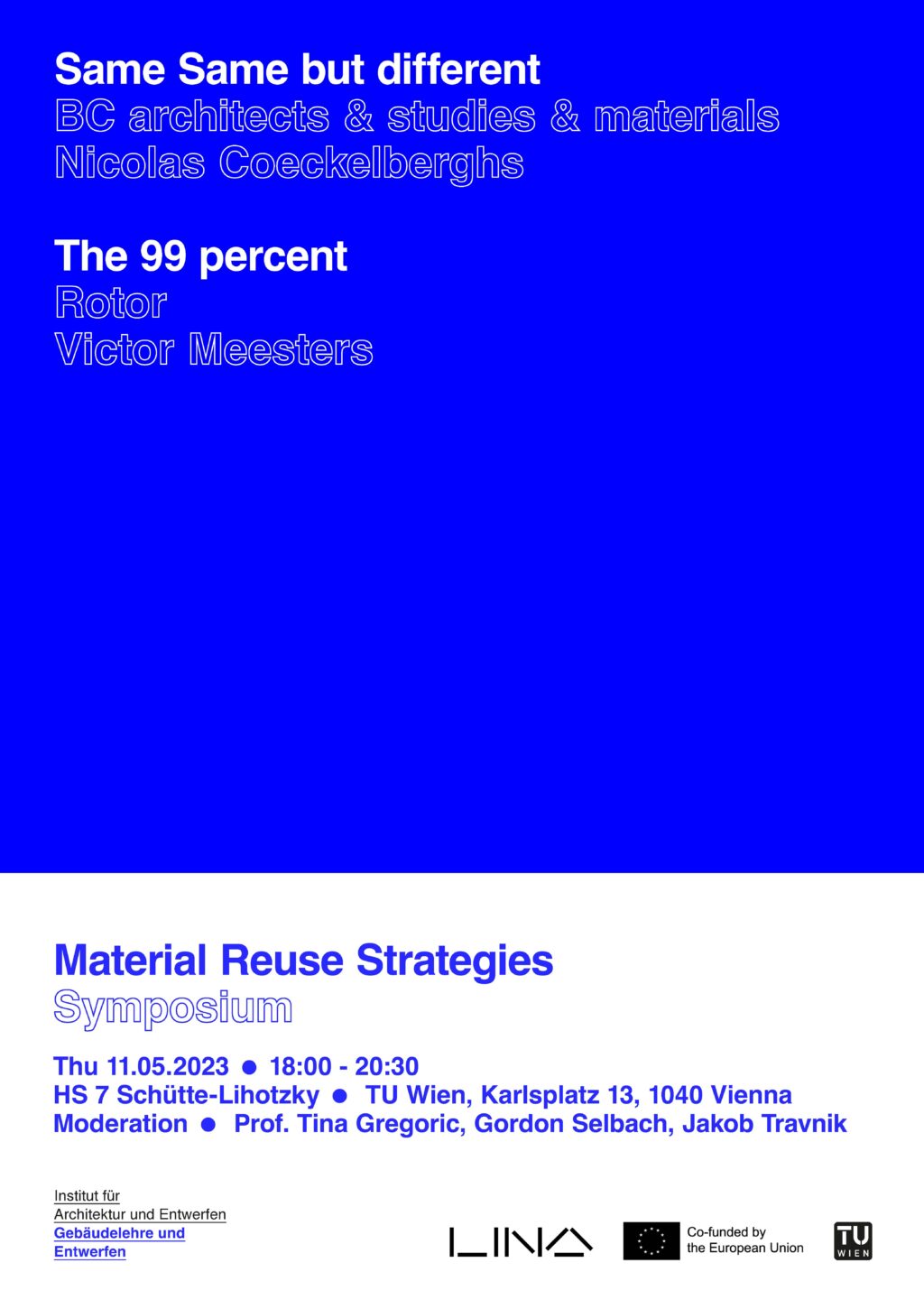
MAY 11, 2023
18:00
SYMPOSIUM:
MATERIAL REUSE STRATEGIES
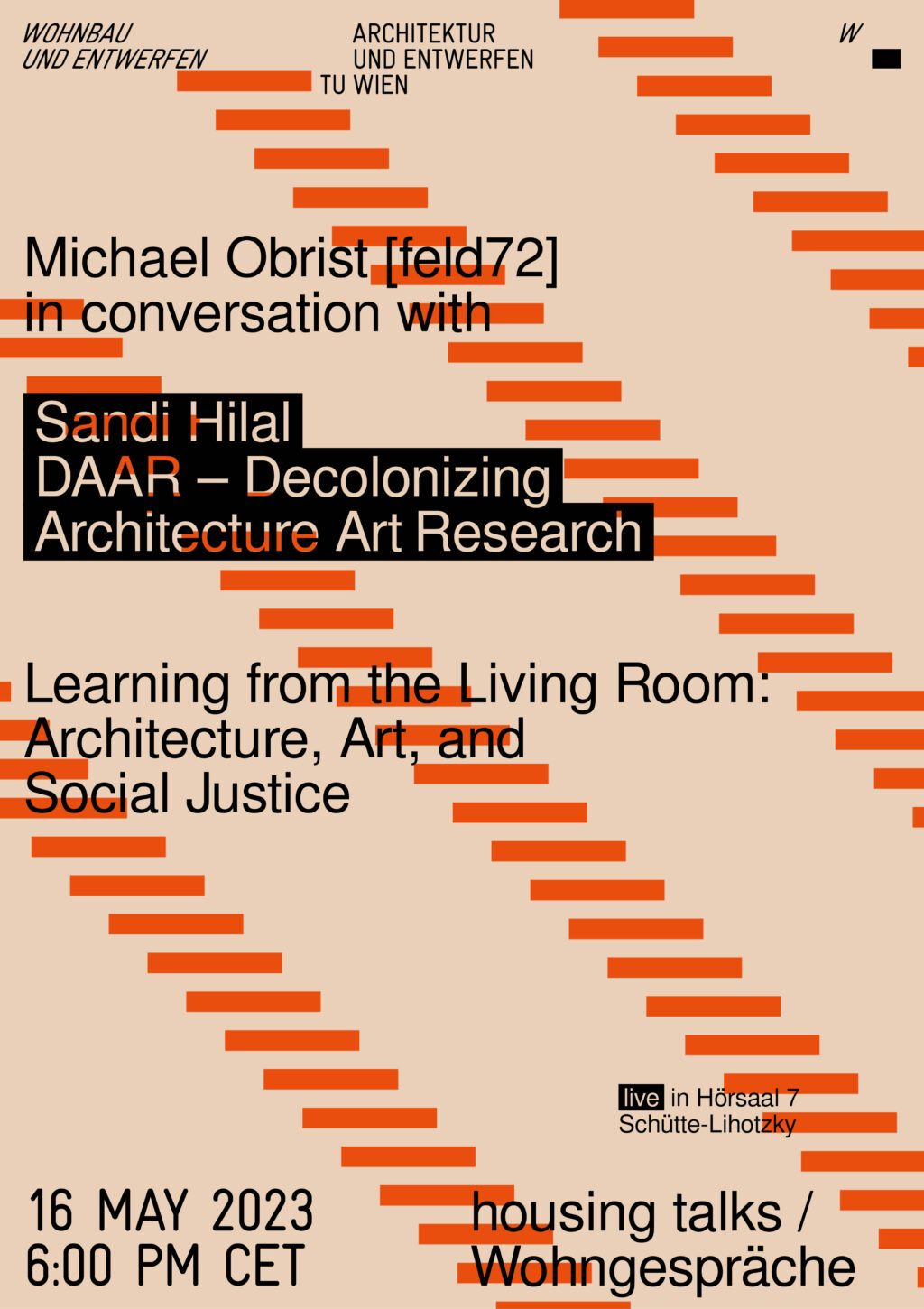
MAY 16, 2023
18:00
HOUSING TALKS:
SANDI HILAL

MAY 23, 2023
18:00
HOUSING TALKS:
FLORENCIA ANDREOLA, AZZURA MUZZONIGRO

MAY 24, 2023
18:30
LECTURE:
KIM TROGAL & ANNA WAKEFORD HOLDER

MAY 25, 2023
18:00
LECTURE:
AVENIER CORNEJO ARCHITECTS
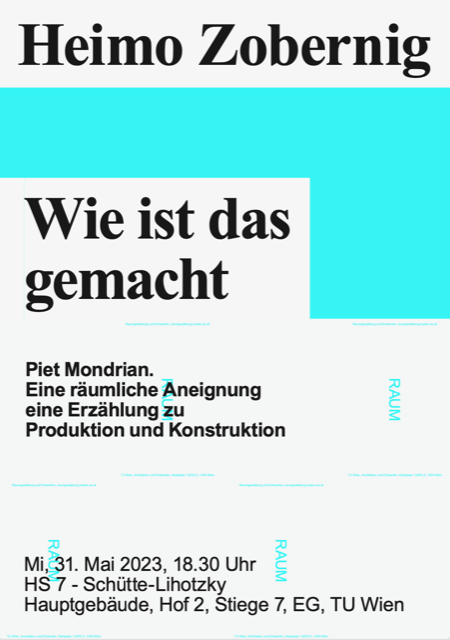
MAY 31, 2023
18:30
LECTURE:
HEIMO ZOBERNIG

JUN 6, 2023
18:00
HOUSING TALKS:
JOCHEN BECKER, METROZONES

JUN 20, 2023
18:00
HOUSING TALKS:
SASHA PIRKER
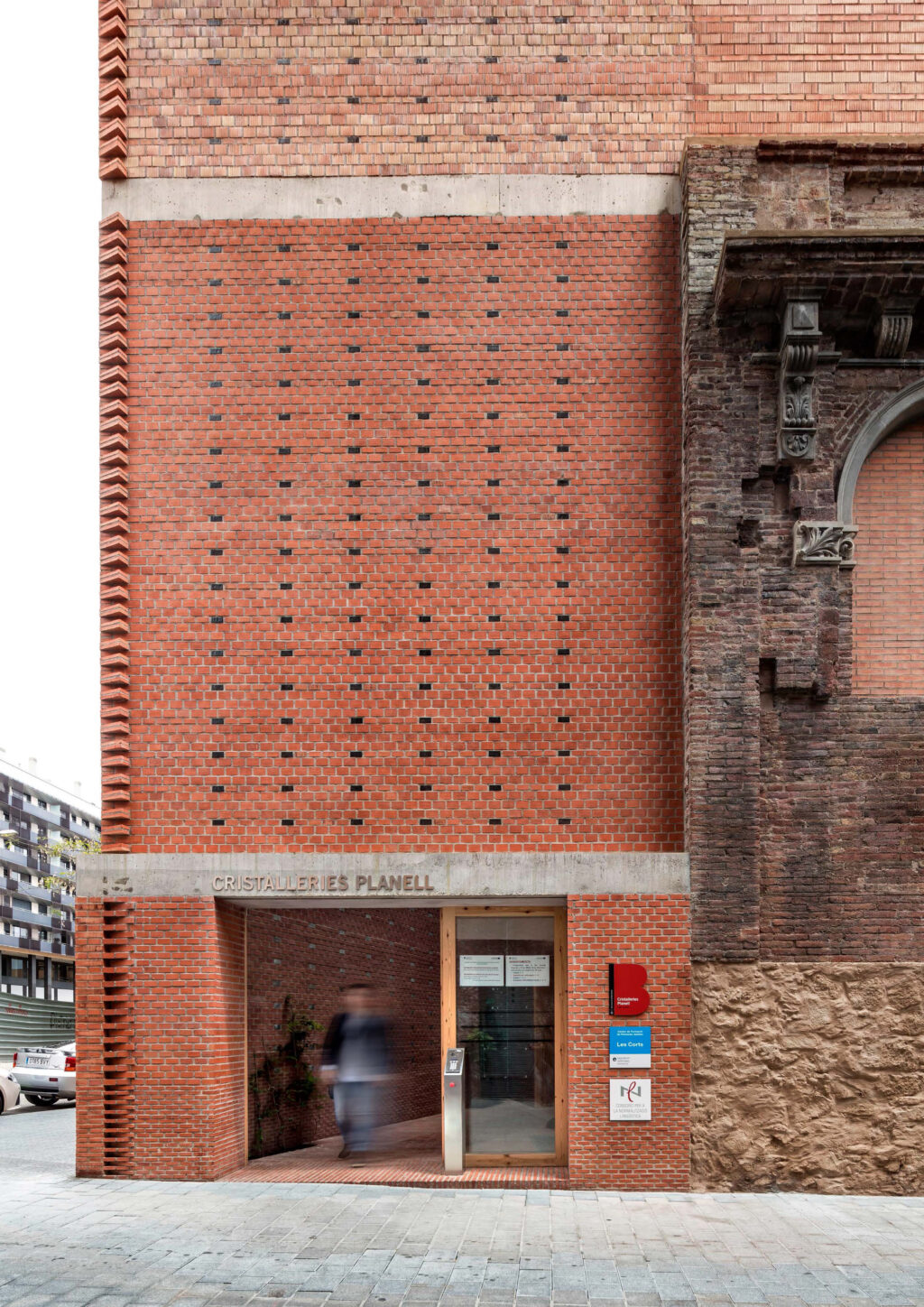
JUN 26, 2023
18:00
LECTURE:
JOSEP RICART, HARQUITECTES
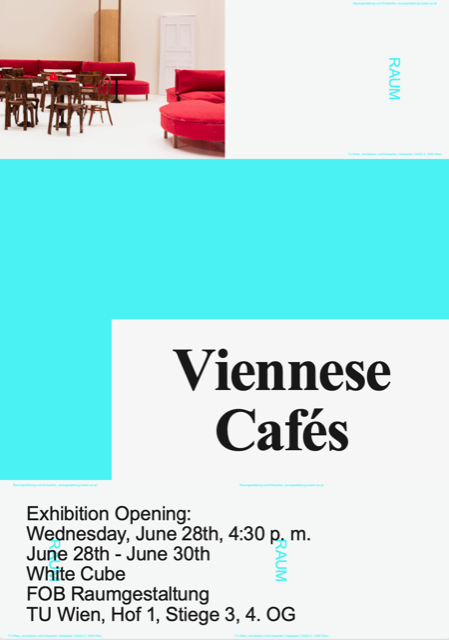
JUN 28, 2023
16:30
EXHIBITION:
VIENNESE CAFÉS: PUBLIC INTERIOR, URBAN SALON

JUN 28, 2023
18:30
LECTURE:
GREGOR EICHINGER

SEP 27, 2023
18:00
EXHIBITION:
Bioregionale Strategien der Wieder- verwendung
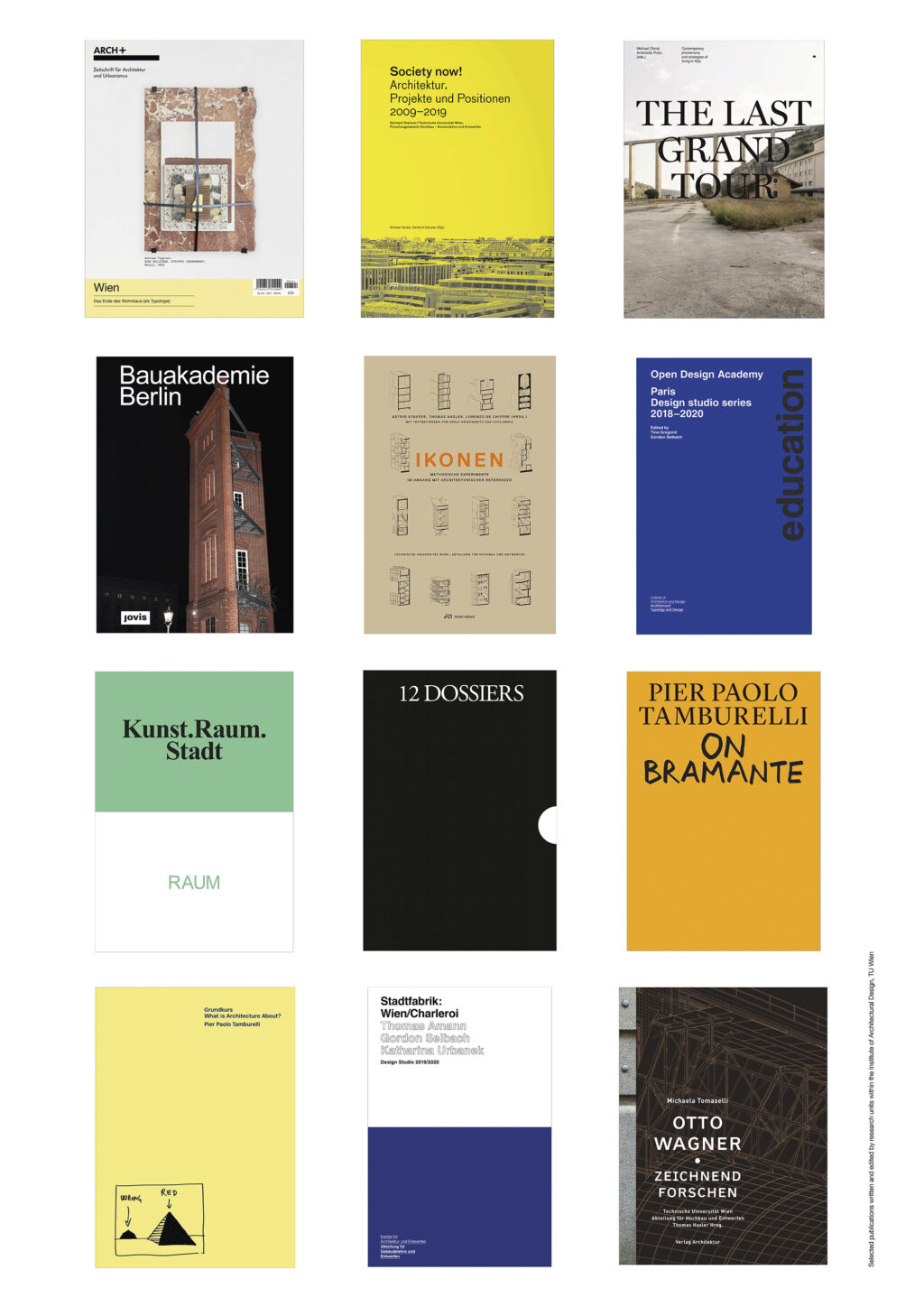
OCT 11, 2023
18:00
PRESENTATION & DISCUSSION:
WEBSITE LAUNCH & TALK ON PUBLICATIONS
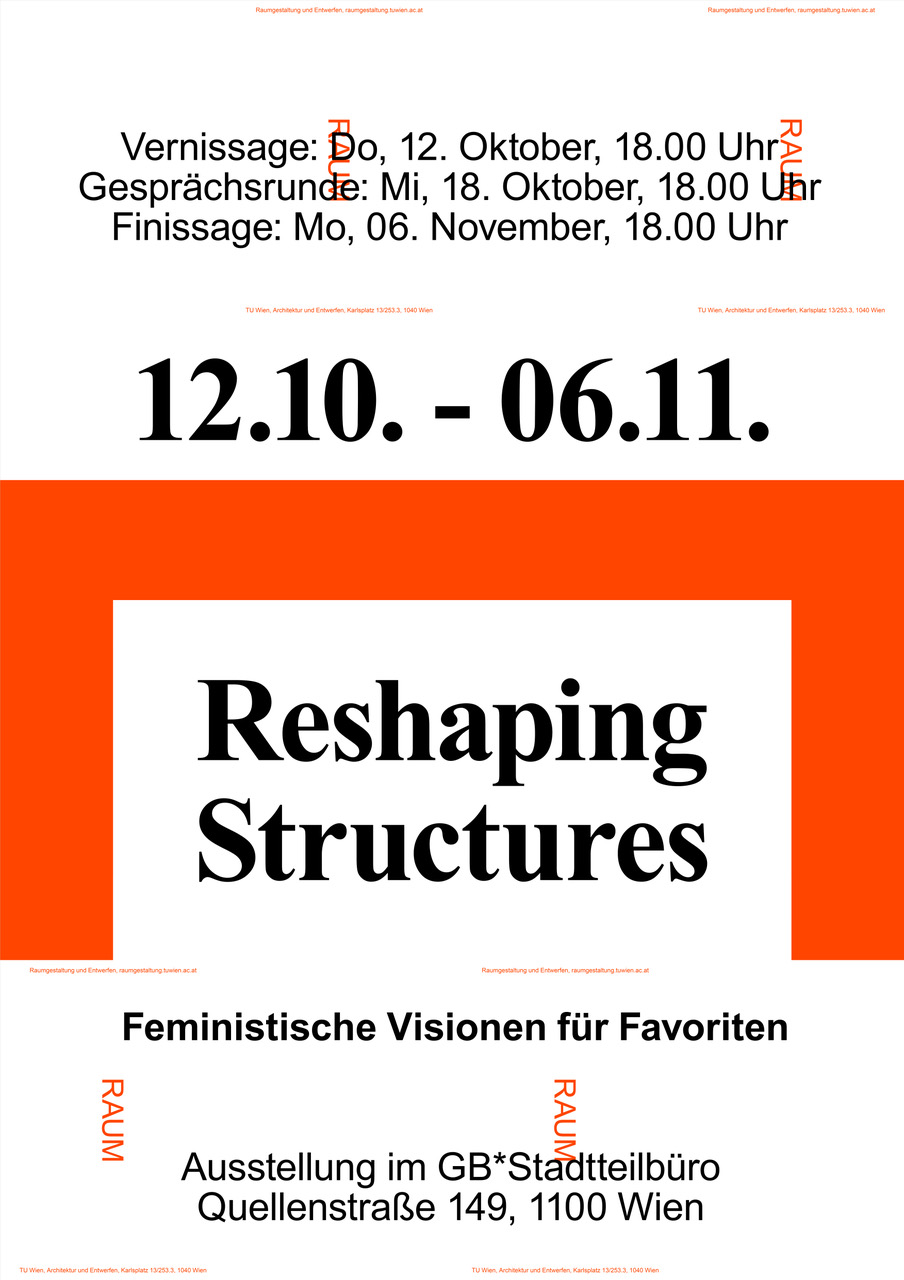
OCT 12, 2023
18:00
EXHIBITION:
RESHAPING STRUCTURES

NOV 7, 2023
18:00
HOUSING TALKS:
ARCHITEKTUR-
KOLLEKTIV AKT
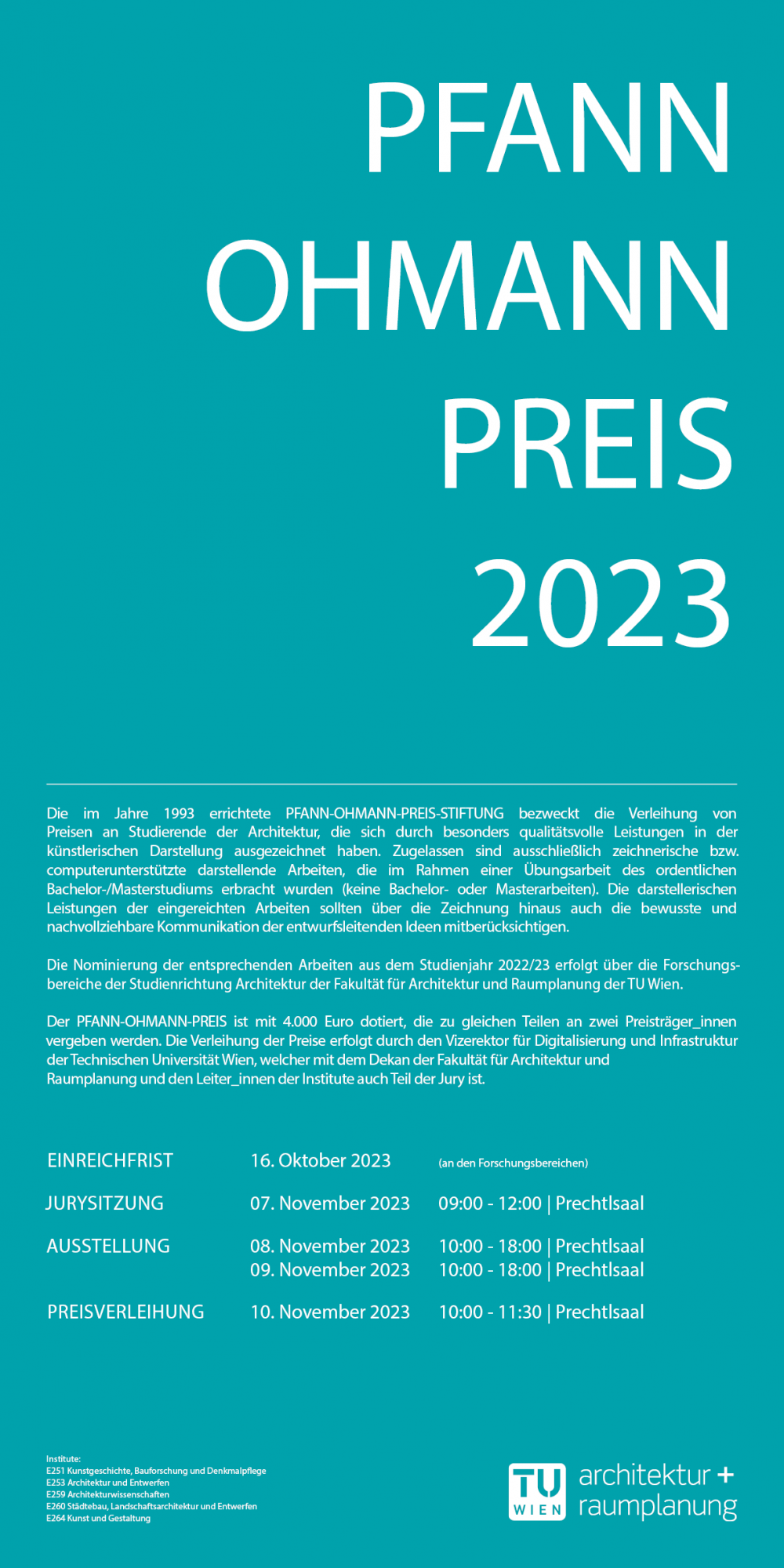
NOV 10, 2023
10:00
EXHIBITION:
PFANN-OHMANN-PREIS 2023
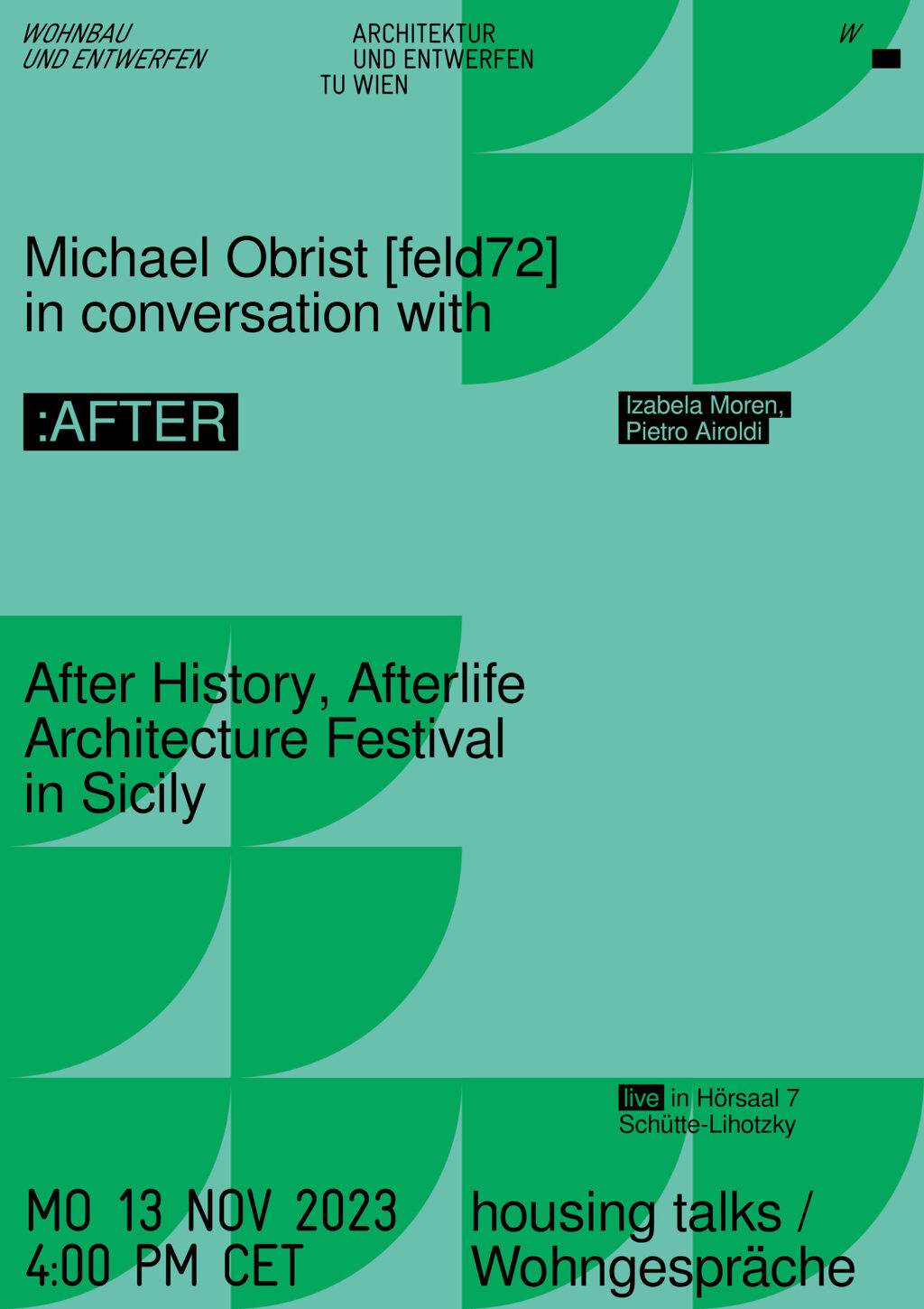
NOV 13, 2023
16:00
HOUSING TALKS:
IZABELA MOREN, PIETRO AIROLDI
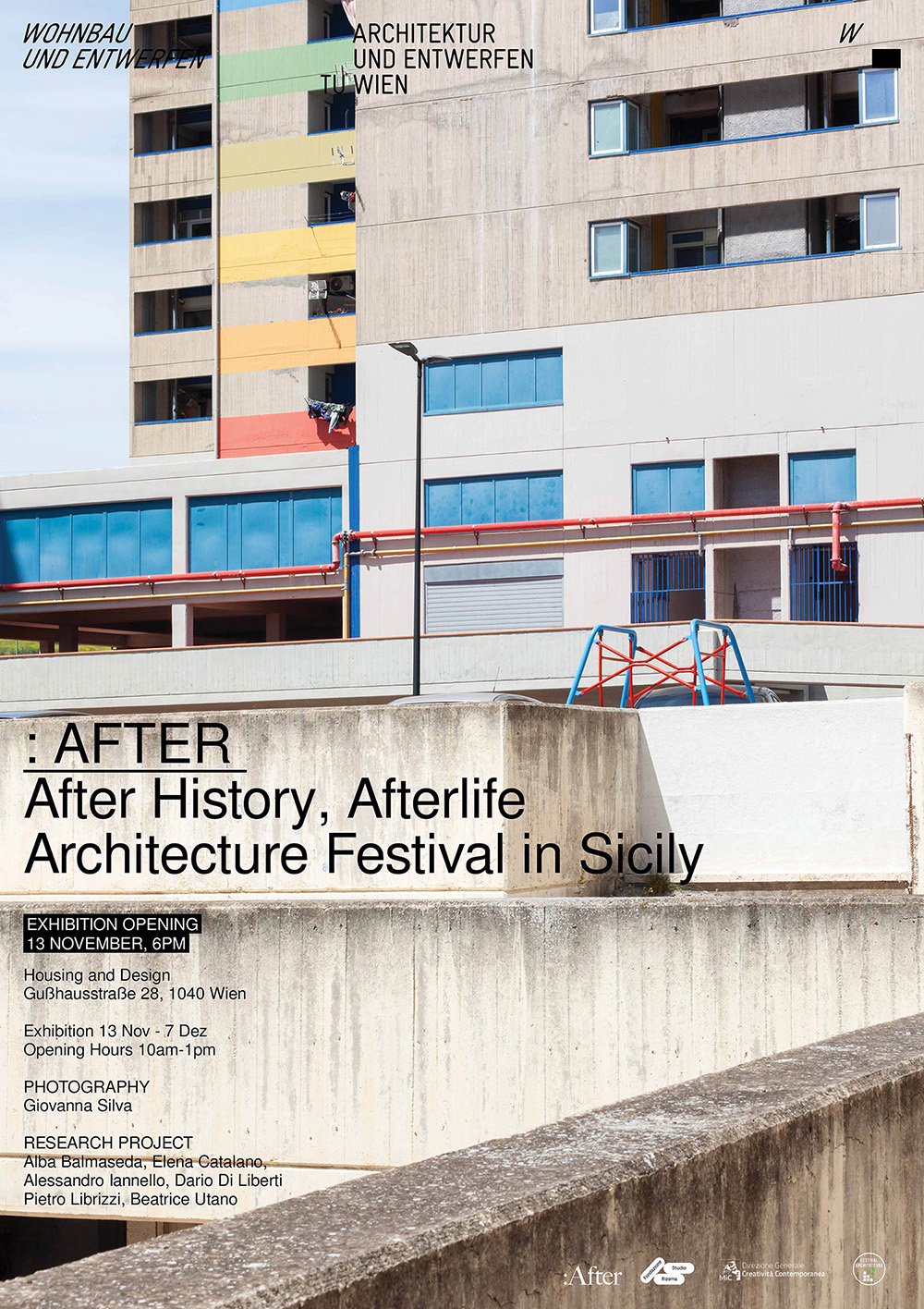
NOV 13, 2023
18:00
EXHIBITION:
MODERNITY SOUTH SOUTH
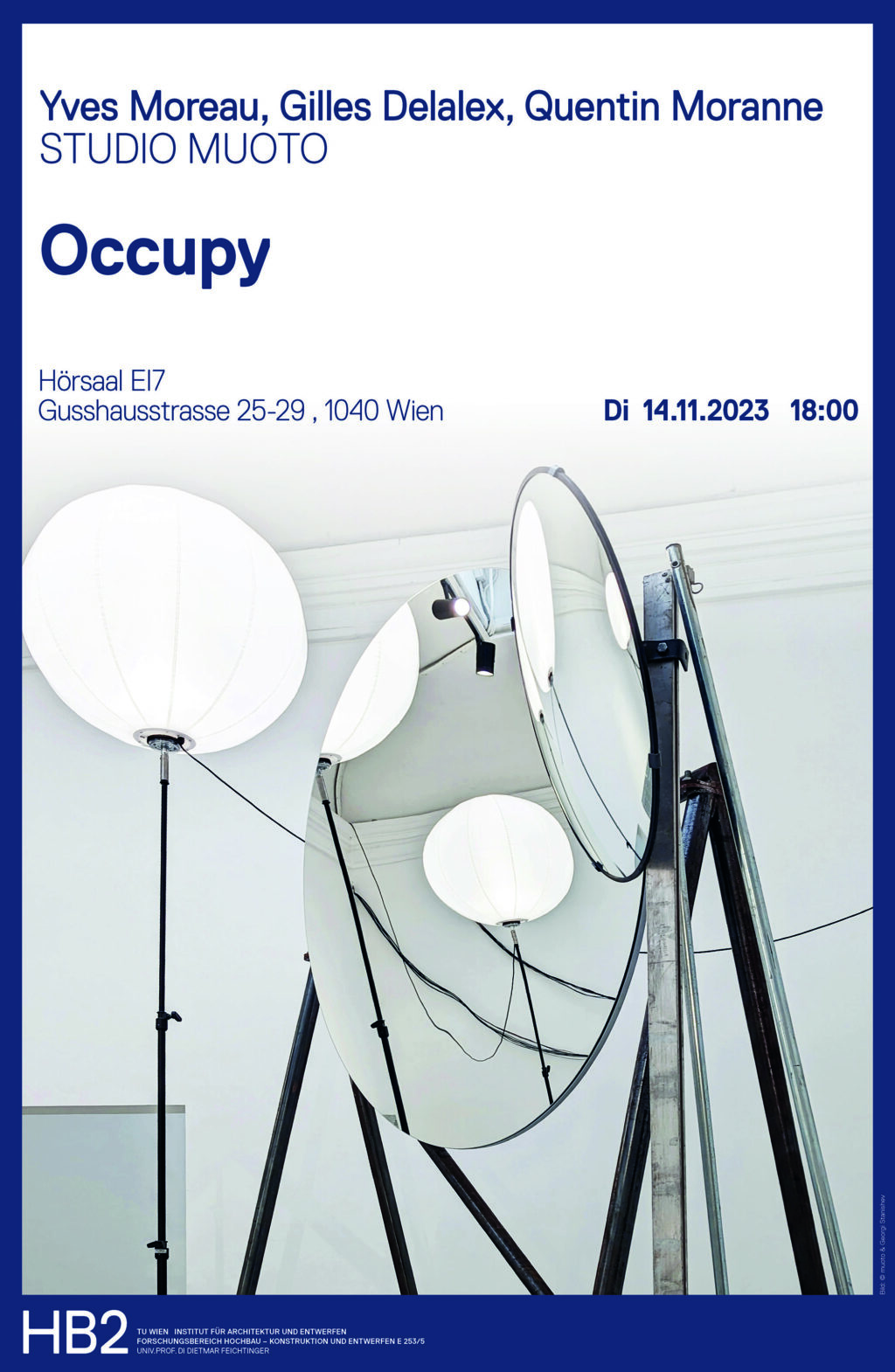
NOV 14, 2023
18:00
LECTURE:
STUDIO MUOTO
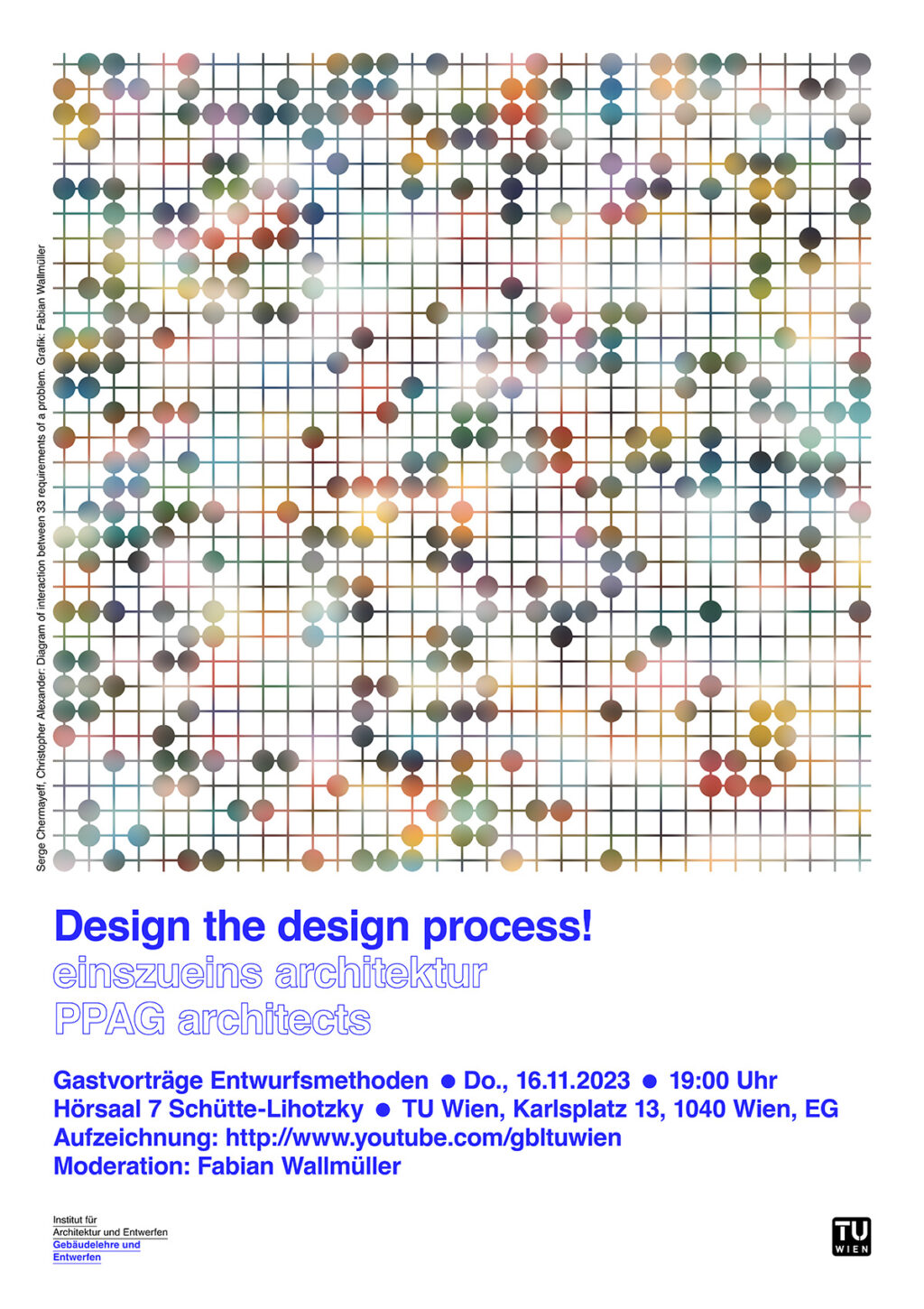
NOV 16, 2023
19:00
LECTURE:
einszueins architektur, PPAG architects
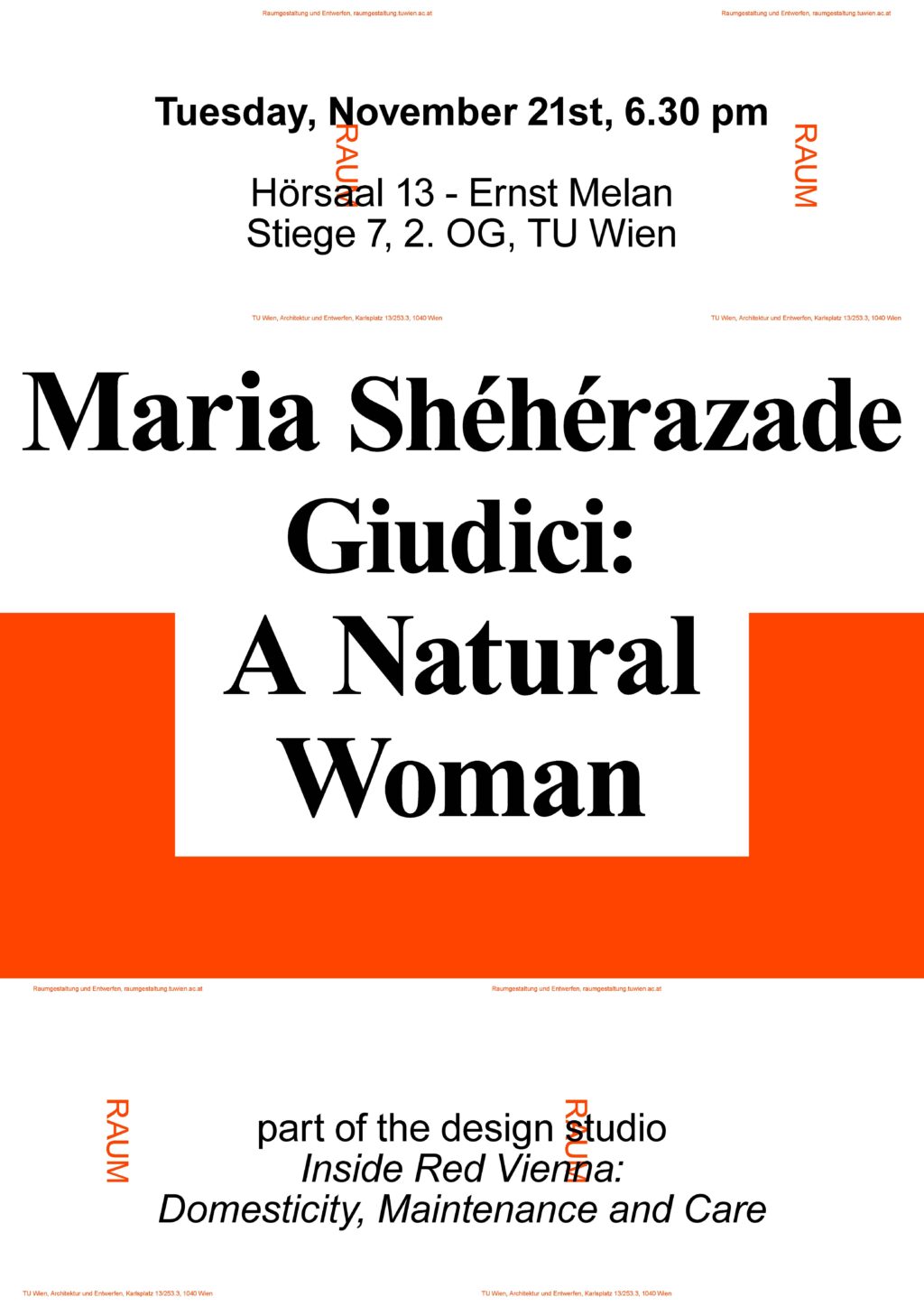
NOV 21, 2023
18:30
LECTURE:
MARIA SHÉHÉRAZADE GUIDICI

NOV 22, 2023
16:00
SYMPOSIUM:
RADIKALE SYMBIOSEN
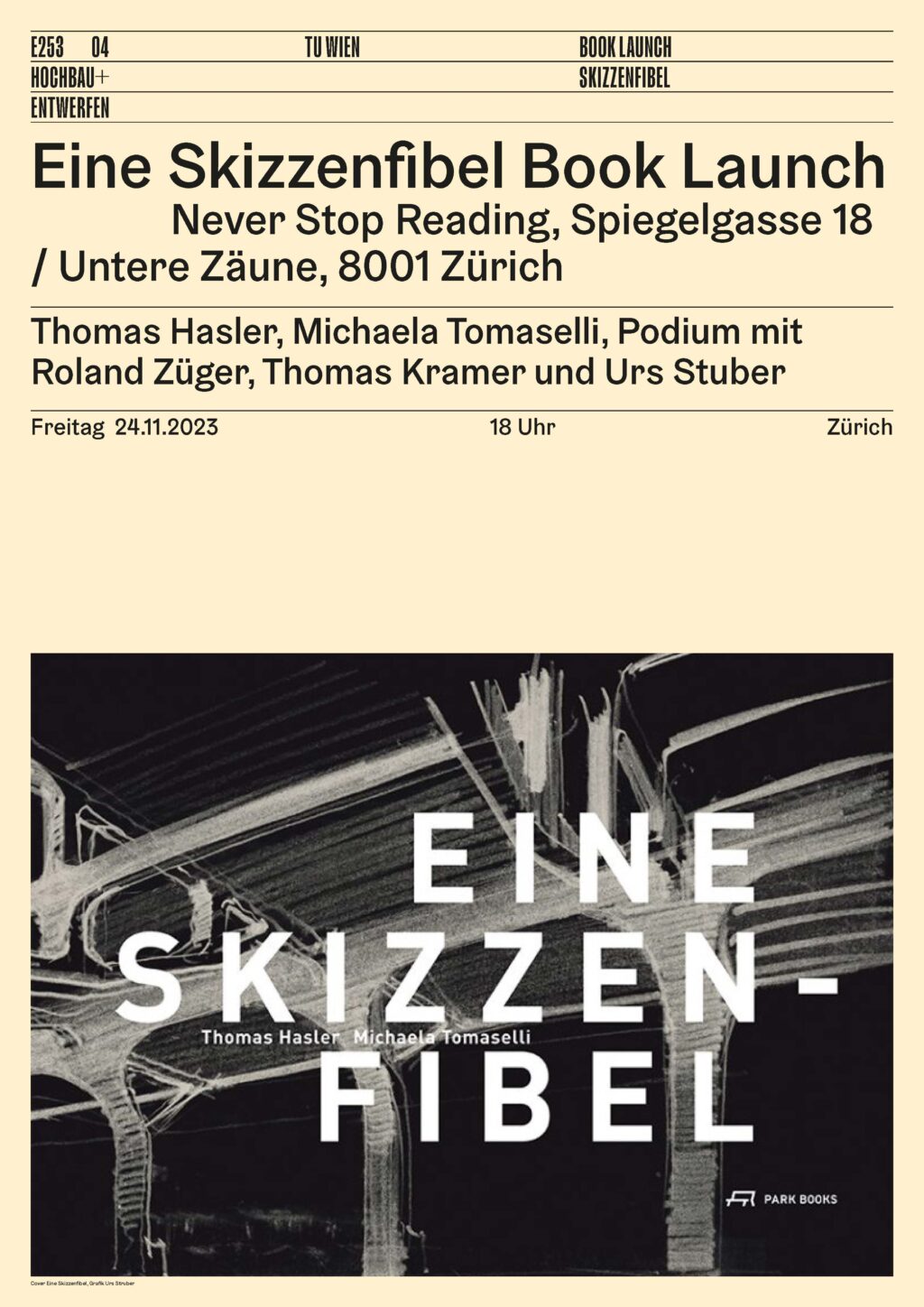
NOV 24, 2023
18:00
BOOK LAUNCH:
EINE SKIZZENFIBEL
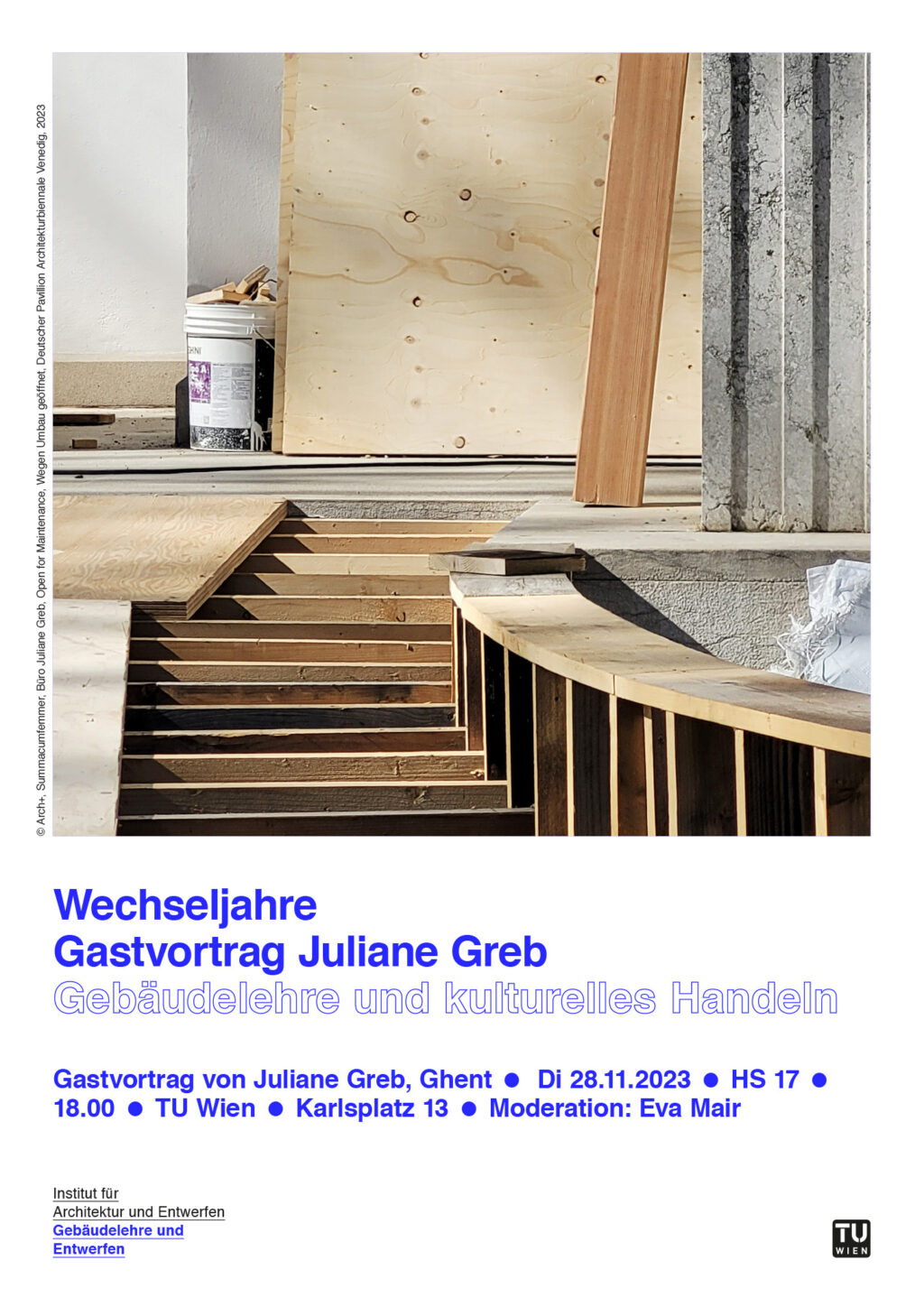
NOV 28, 2023
18:00
LECTURE:
JULIANE GREB

NOV 28, 2023
18:00
HOUSING TALKS:
DANIELE KARASZ

NOV 30, 2023
18:00
LECTURE:
GABRIELA DENK
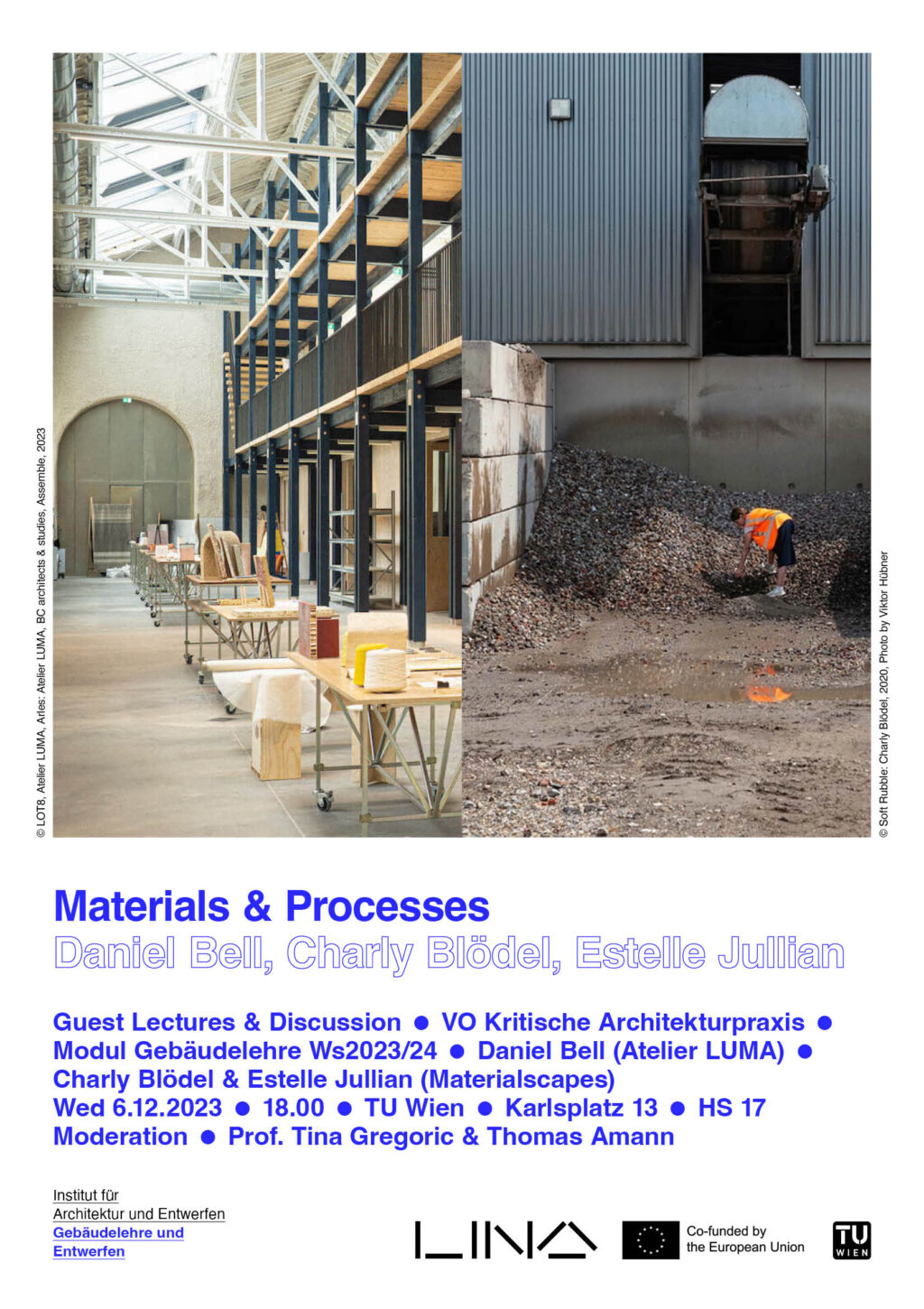
DEC 6, 2023
18:00
LECTURES:
DANIEL BELL, CHARLY BLÖDEL, ESTELLE JULLIAN
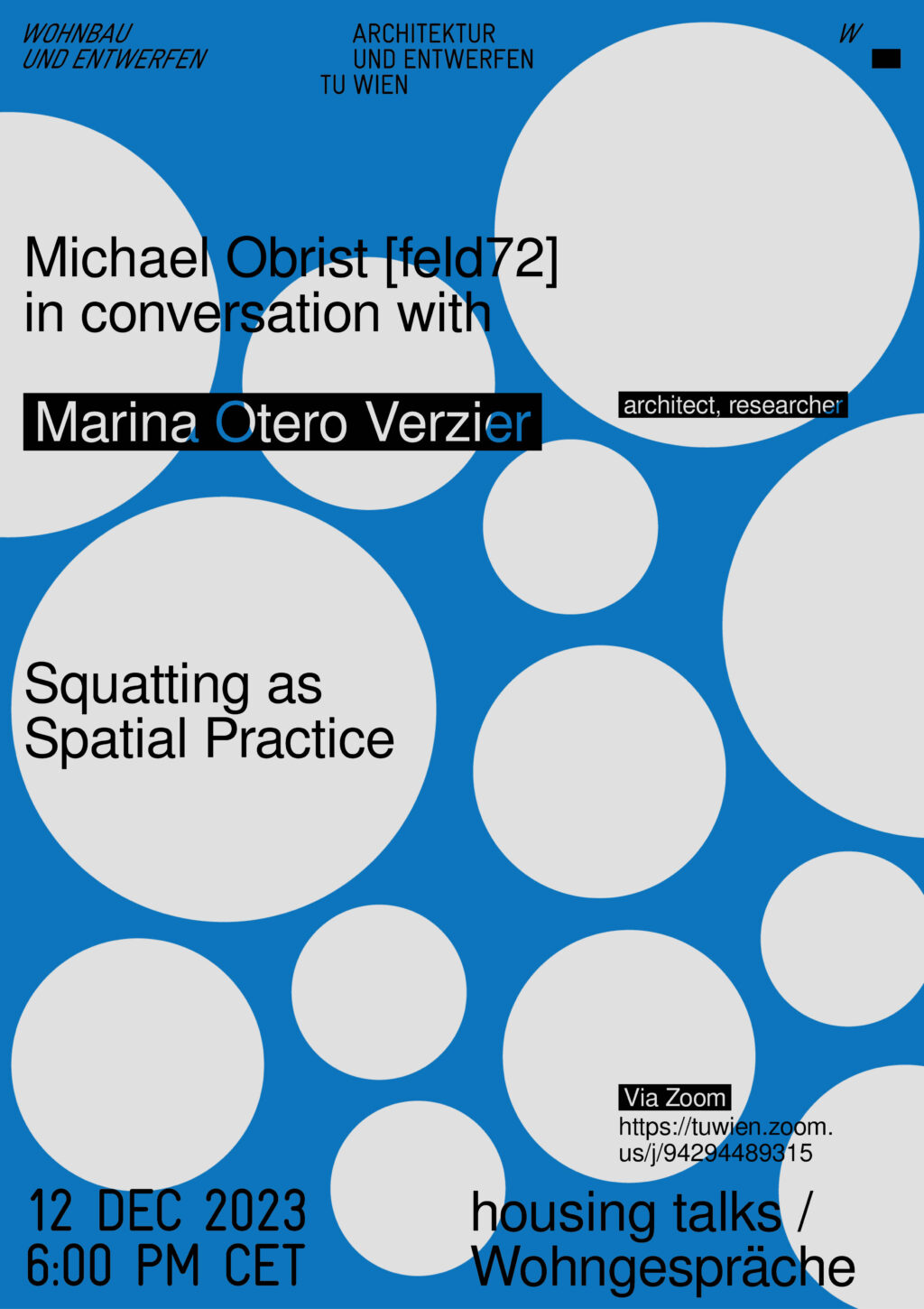
DEC 12, 2023
18:00
HOUSING TALKS:
MARINA OTERO VERZIER
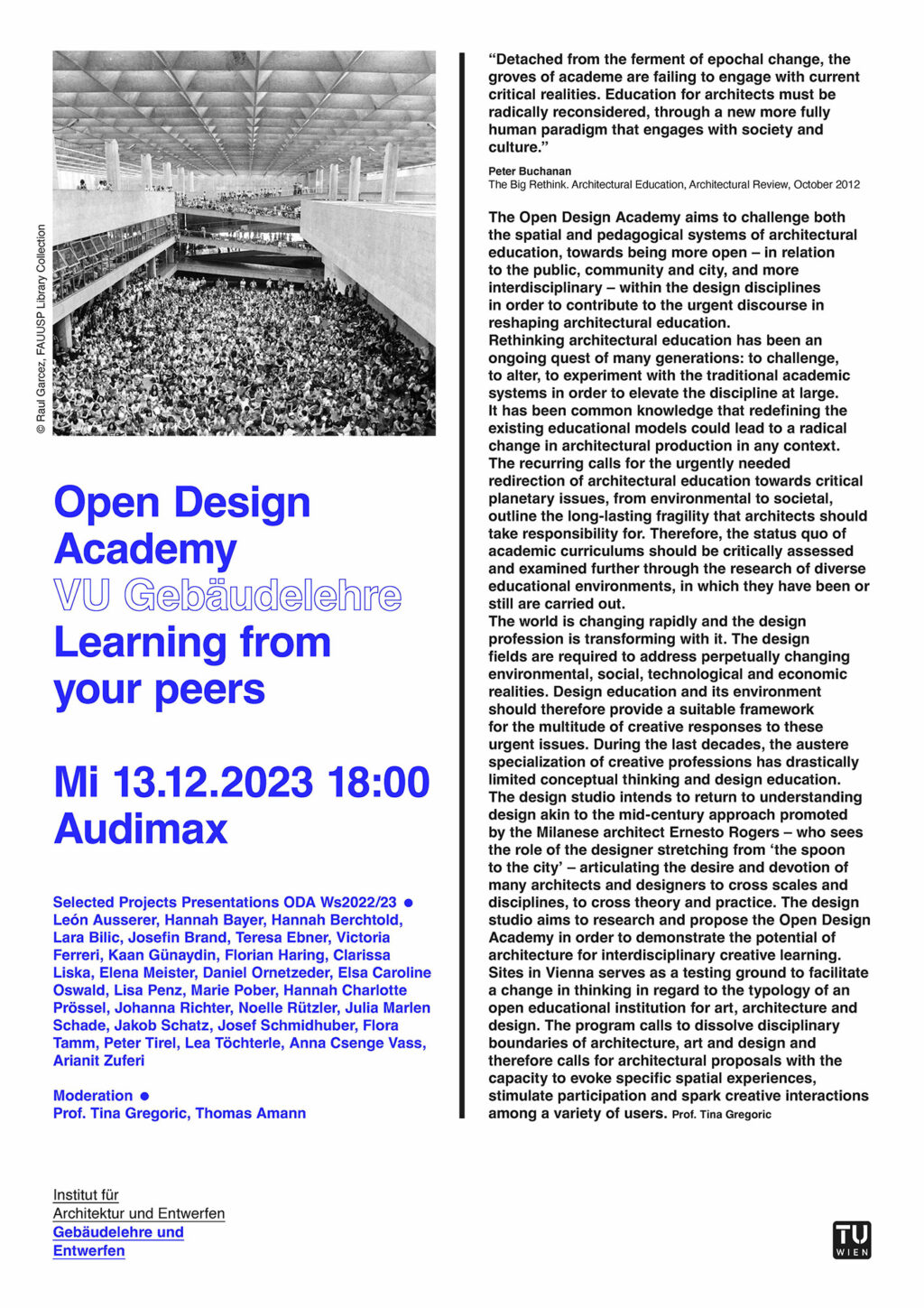
DEC 13, 2023
18:00
LECTURES:
OPEN DESIGN ACADEMY – LEARNING FROM YOUR PEERS

DEC 14, 2023
18:00
LECTURE:
Marc Barani
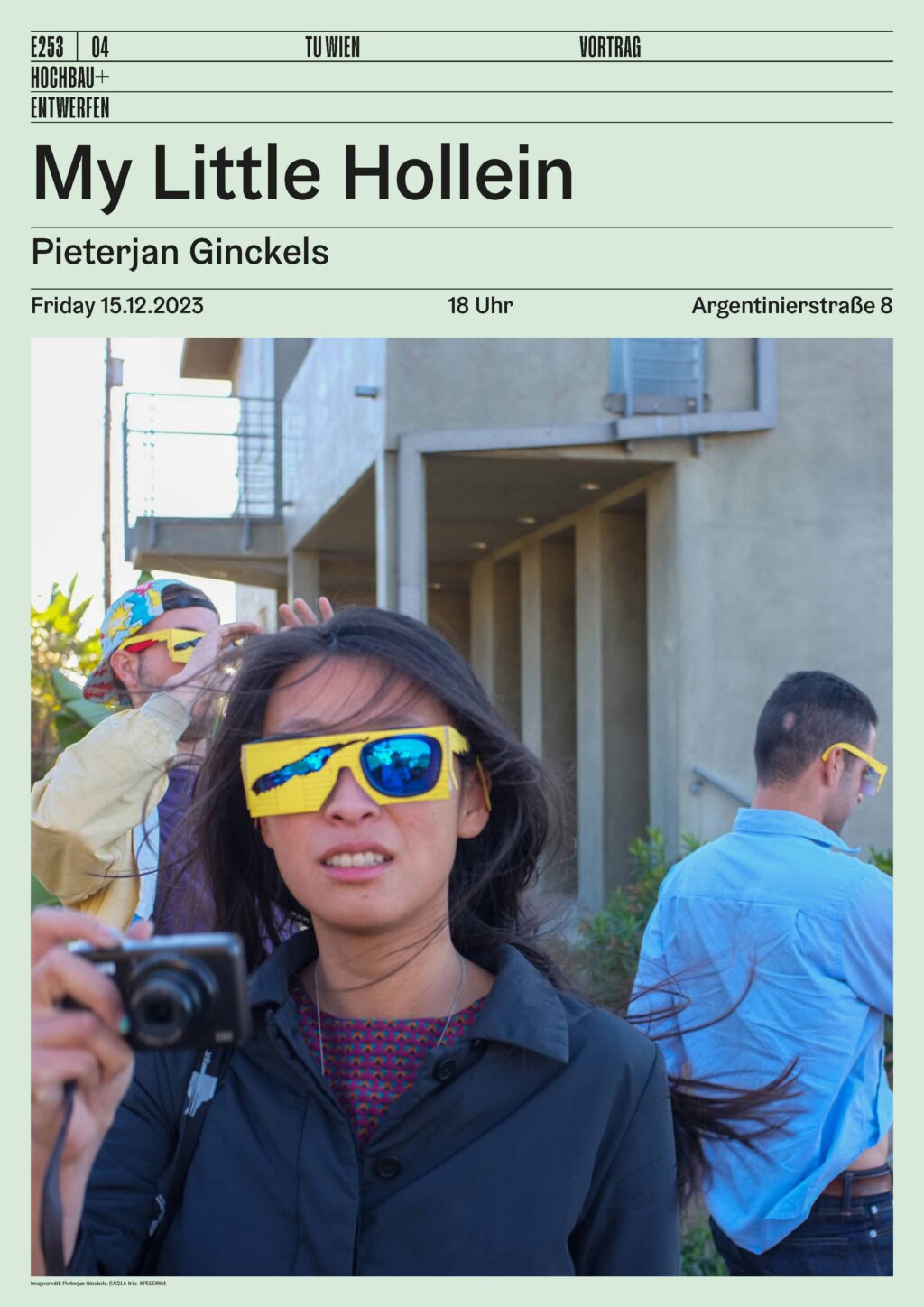
DEC 15, 2023
18:00
LECTURE:
PIETERJAN GINCKELS, KU LEUVEN
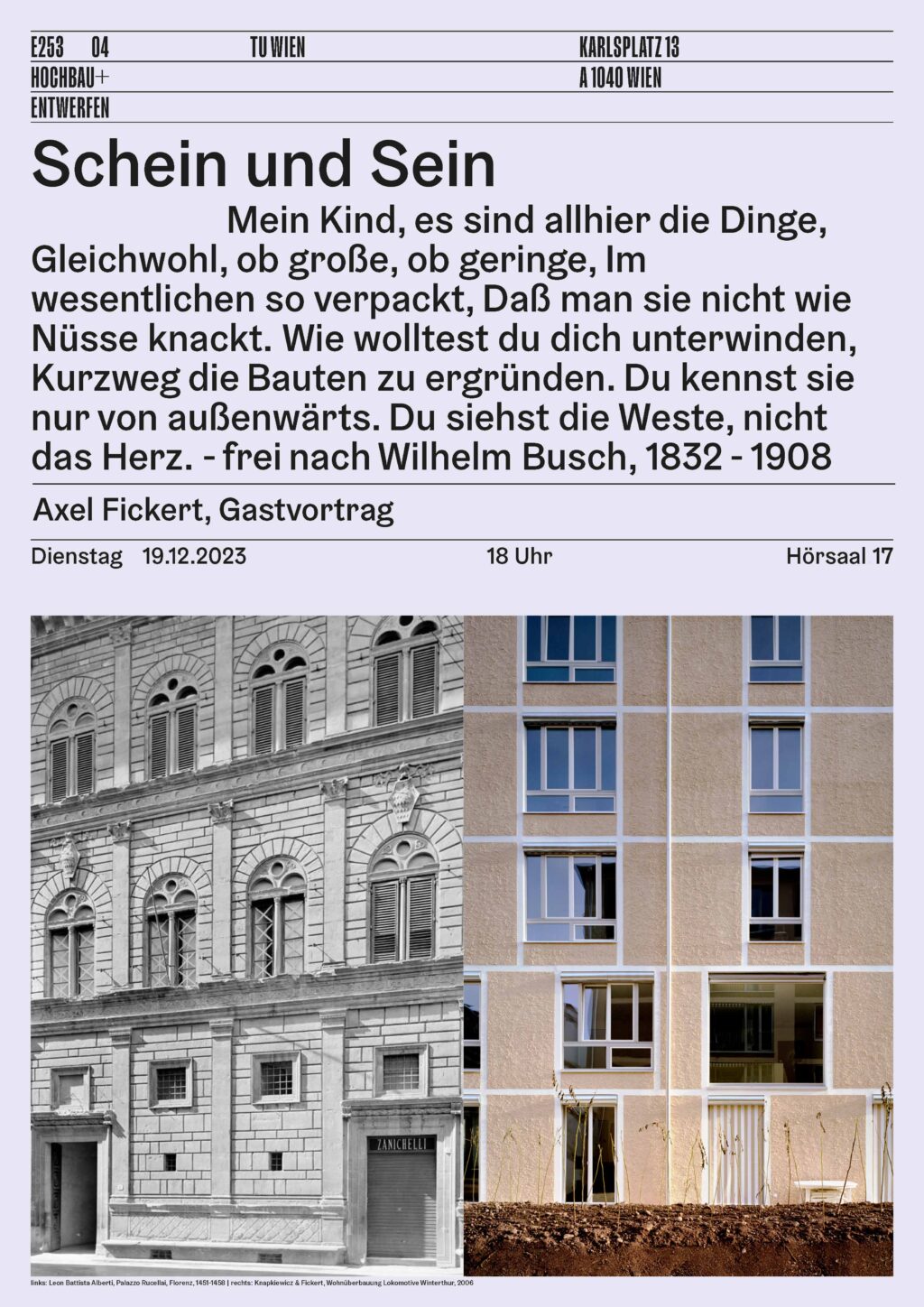
DEC 19, 2023
18:00
LECTURE:
AXEL FICKERT, KNAPKIEWICZ & FICKERT

DEC 20, 2023
18:30
BOOK LAUNCH:
ENTWURFF EINER HISTORISCHEN ARCHITEKTUR
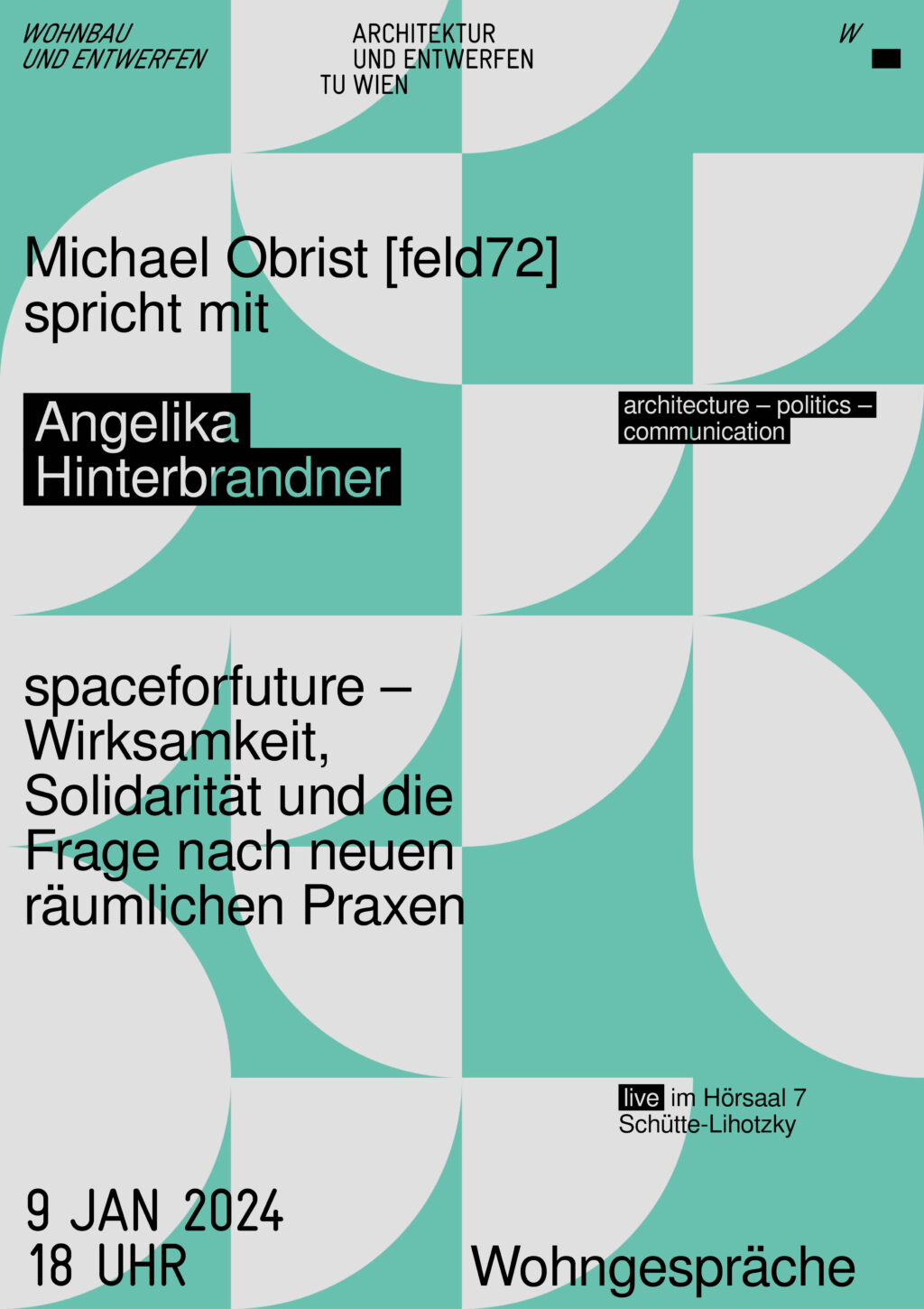
JAN 9, 2024
18:00
HOUSING TALKS:
ANGELIKA HINTER-
BRANDNER
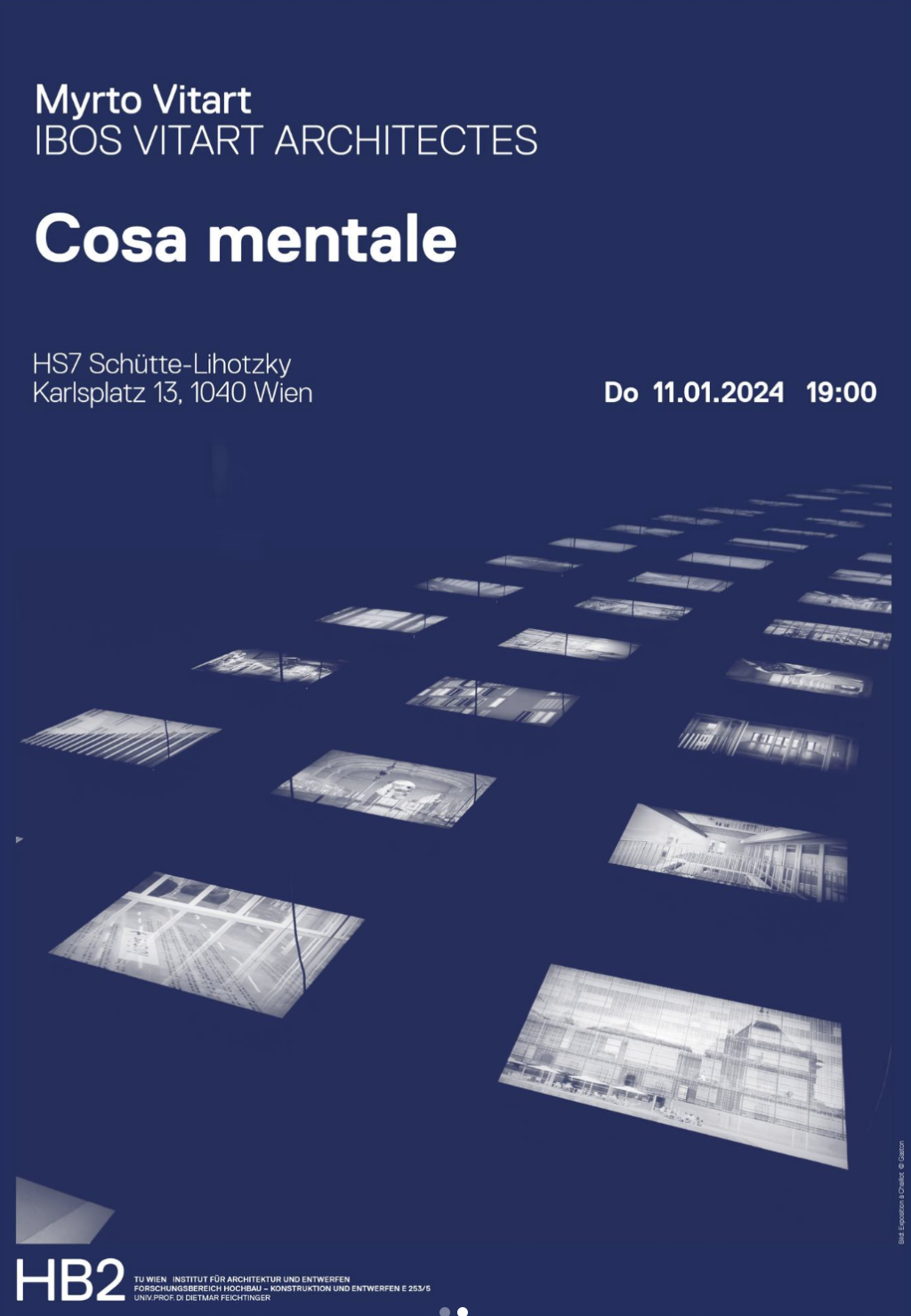
JAN 11, 2024
19:00
LECTURE:
Myrto Vitart
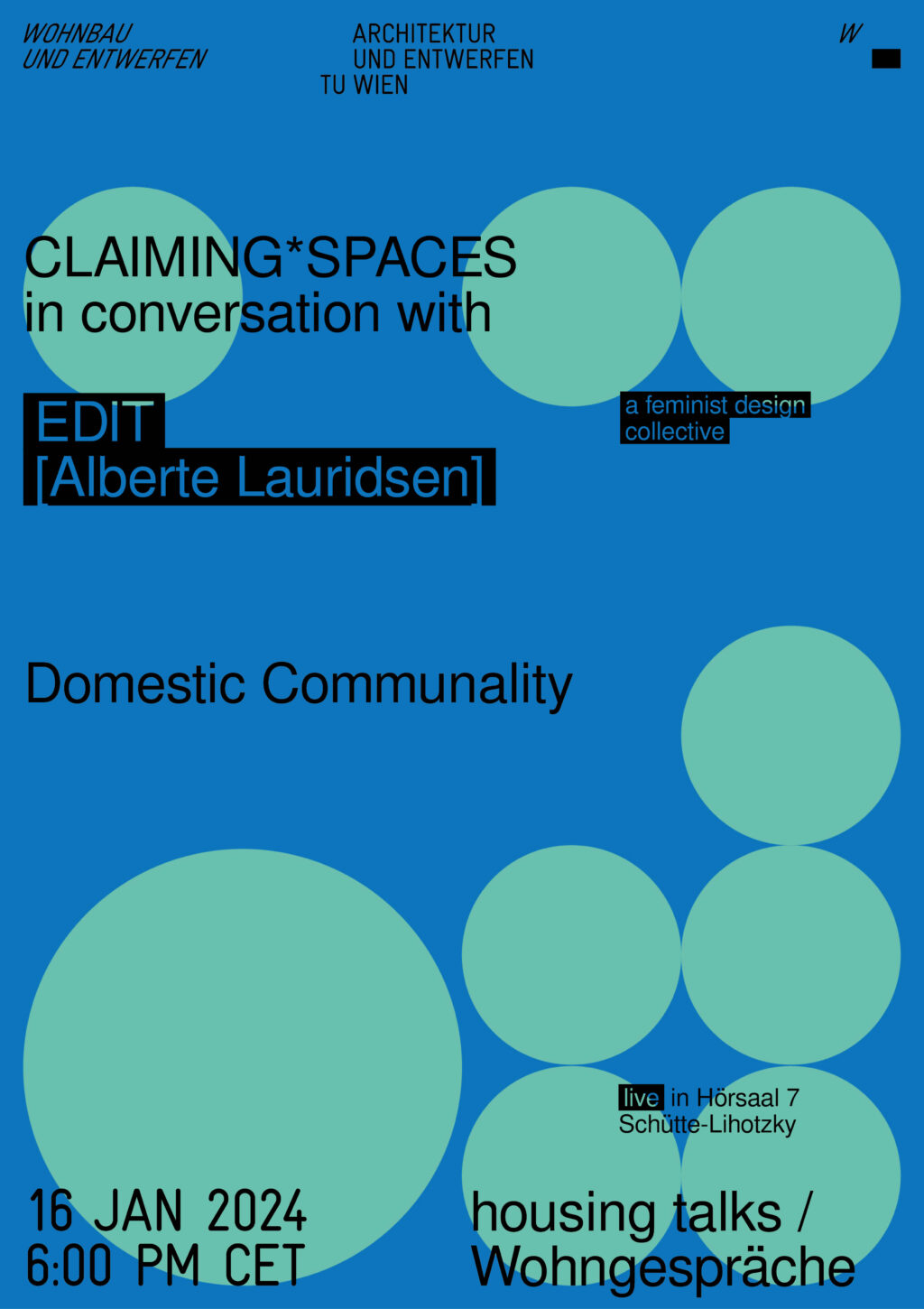
JAN 16, 2024
18:00
HOUSING TALKS:
EDIT [ALBERTE LAURIDSEN]
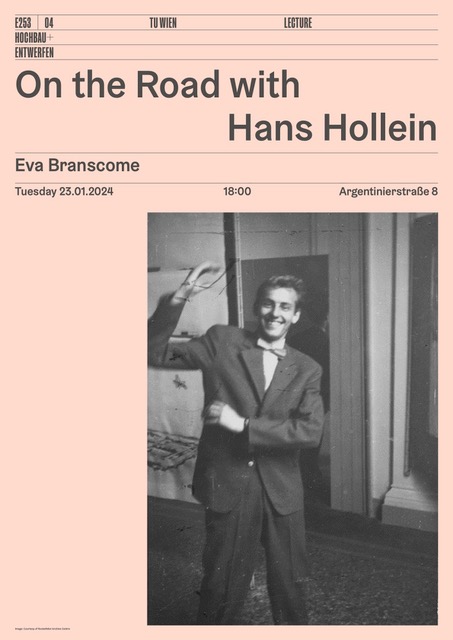
JAN 23, 2024
18:00
LECTURE:
Eva Branscome
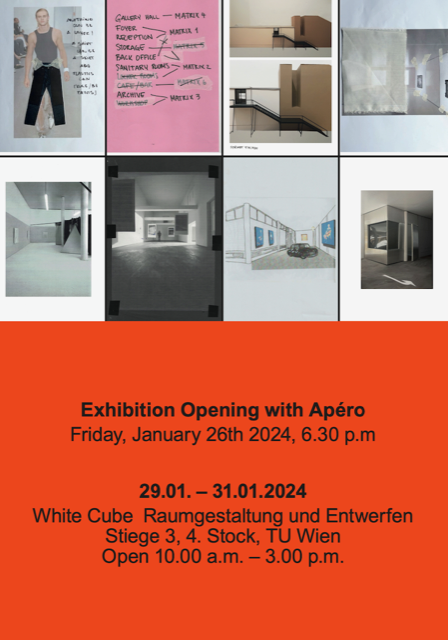
JAN 26, 2024
18:30
EXHIBITION:
DISPLAY & EXHIBIT CASE STUDY HELMUT LANG

JAN 29, 2024
13:00
PRESENTATION & DISCUSSION:
proHolz Student Trophy 24
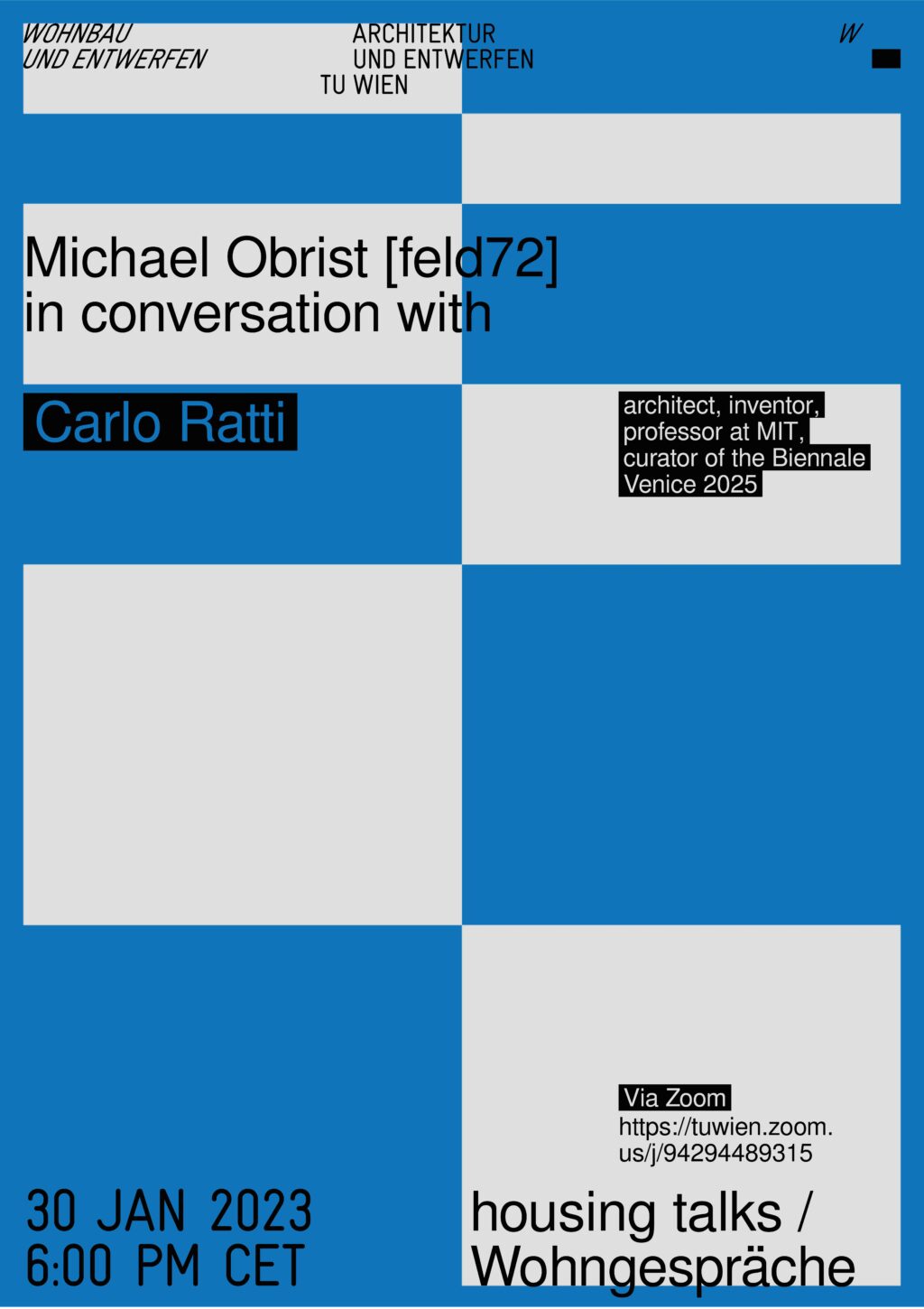
JAN 30, 2024
18:00
HOUSING TALKS: CARLO RATTI
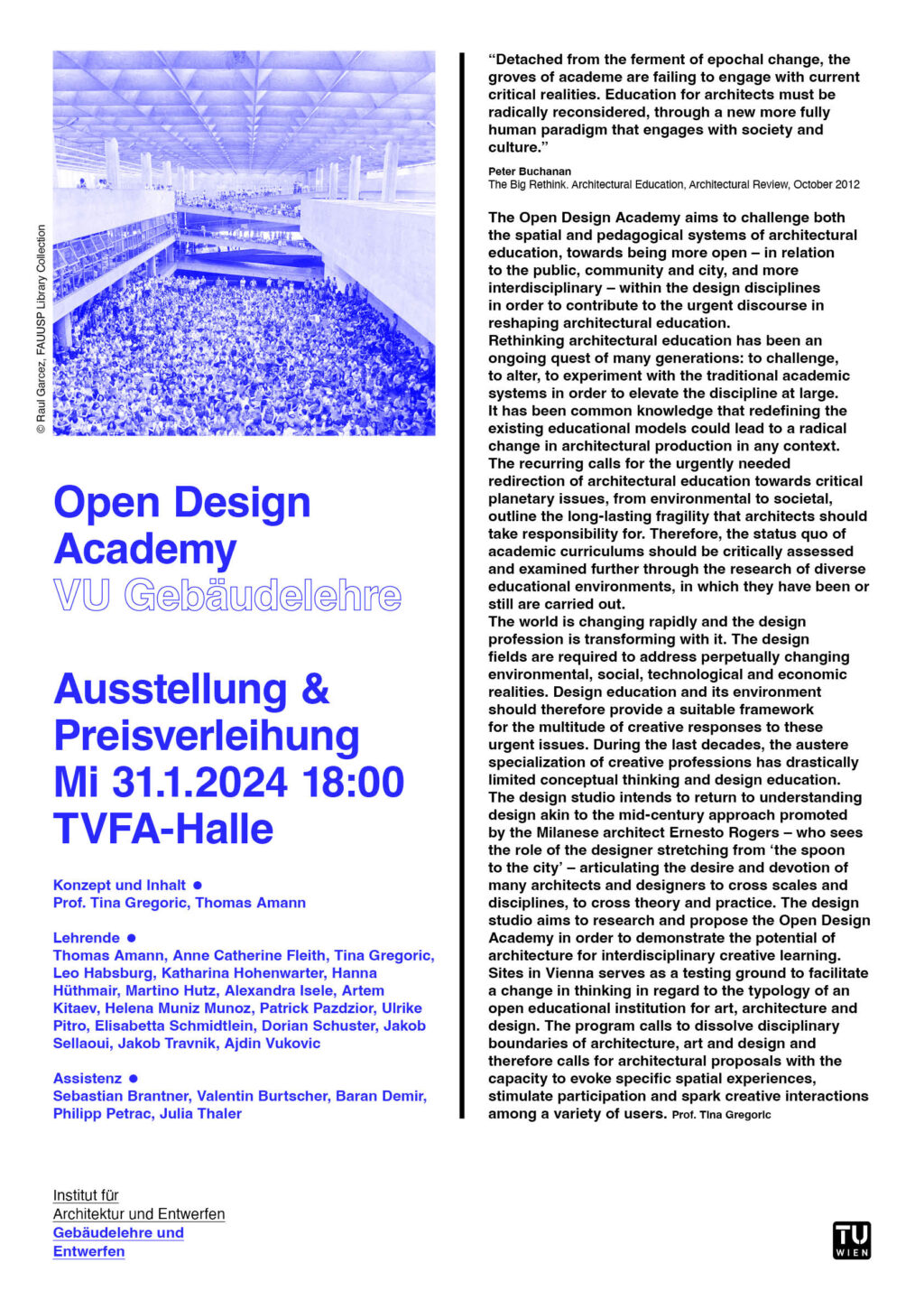
JAN 31, 2024
18:00
EXHIBITION:
OPEN DESIGN ACADEMY
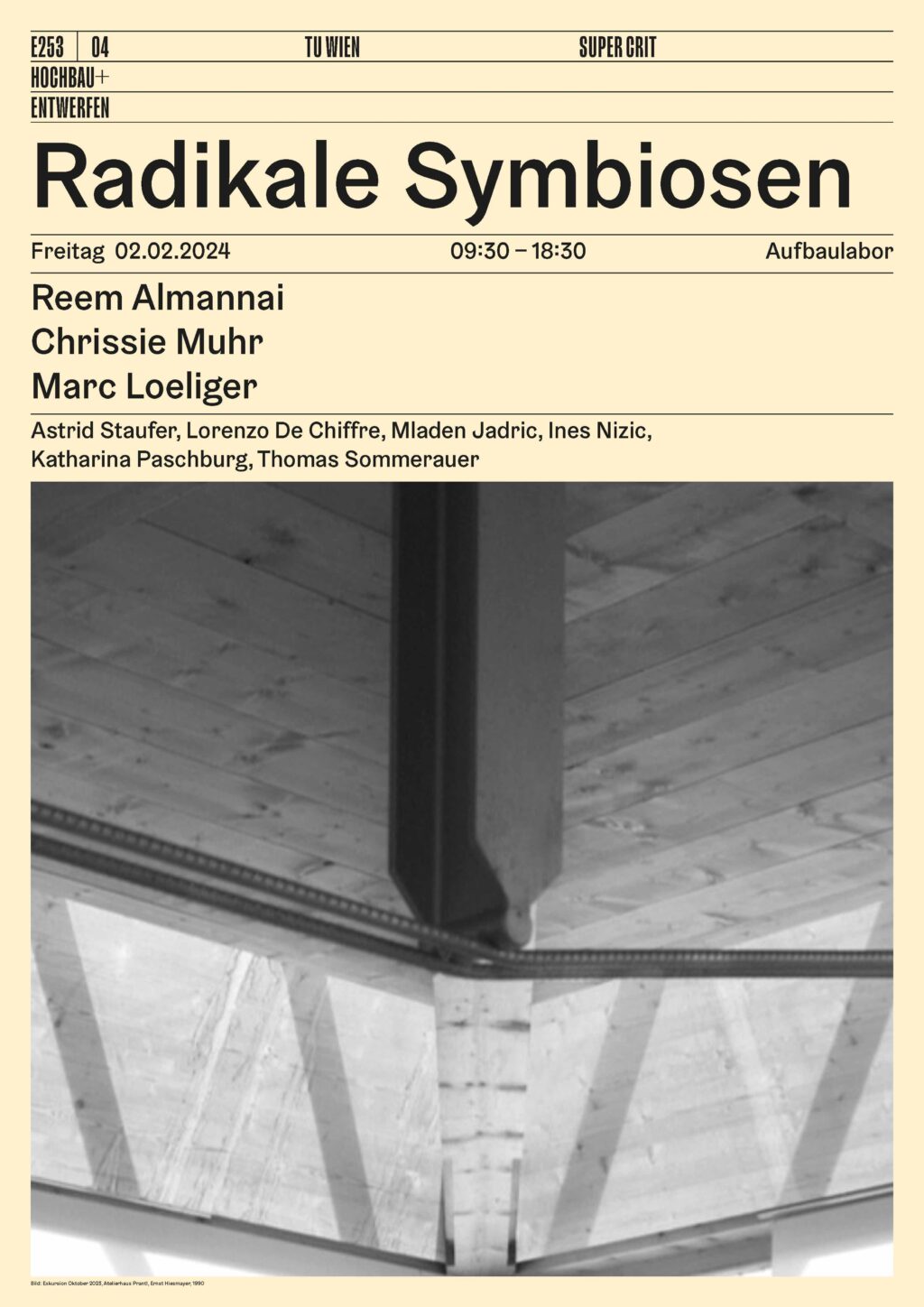
FEB 2, 2024
09:30
SUPERCRIT, EXHIBITION & DISCUSSION:
RADIKALE SYMBIOSEN

MAR 4, 2024
18:30
EXHIBITION:
REVIEW’23
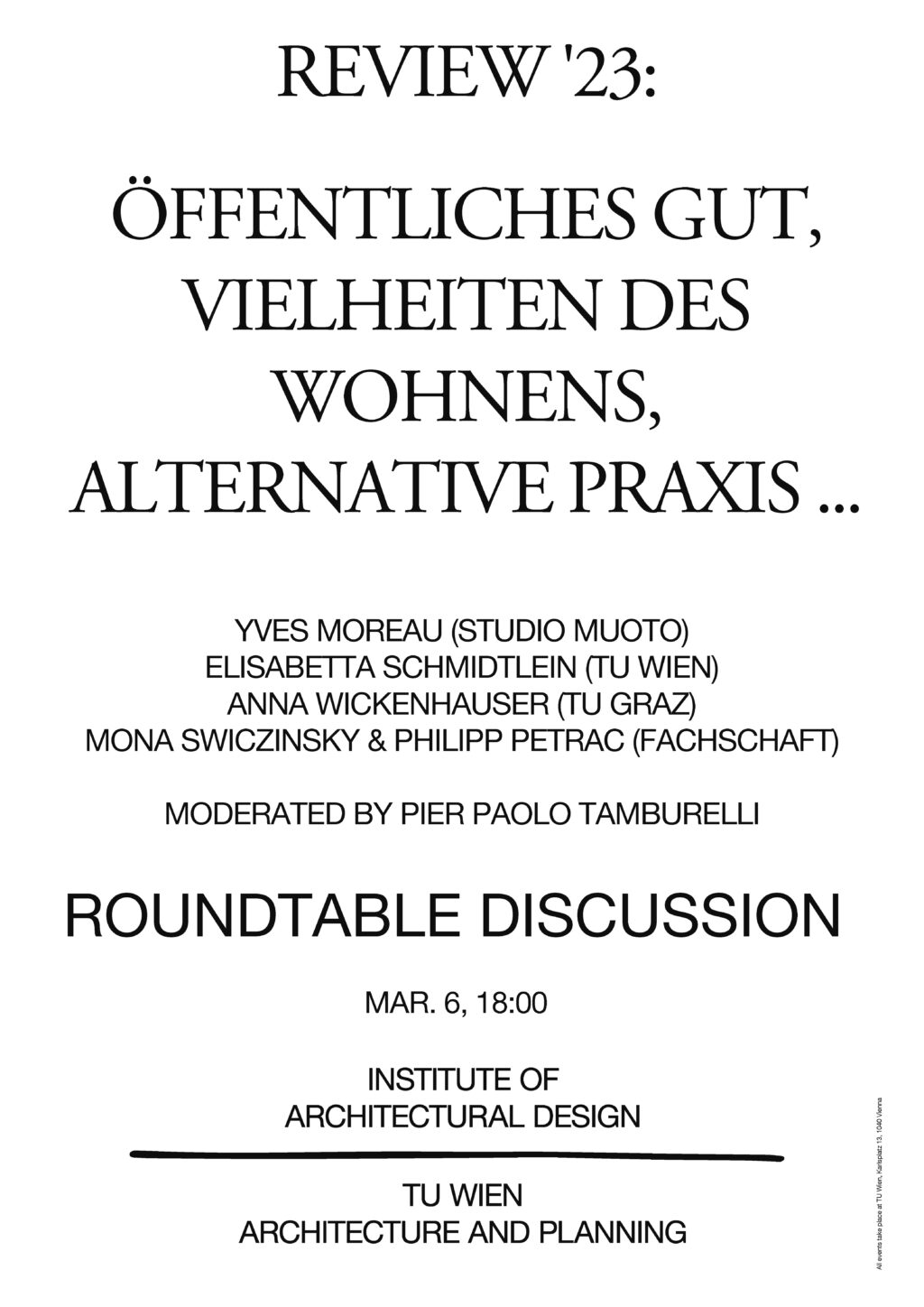
MAR 6, 2024
18:00
ROUNDTABLE DISCUSSION:
REVIEW’23
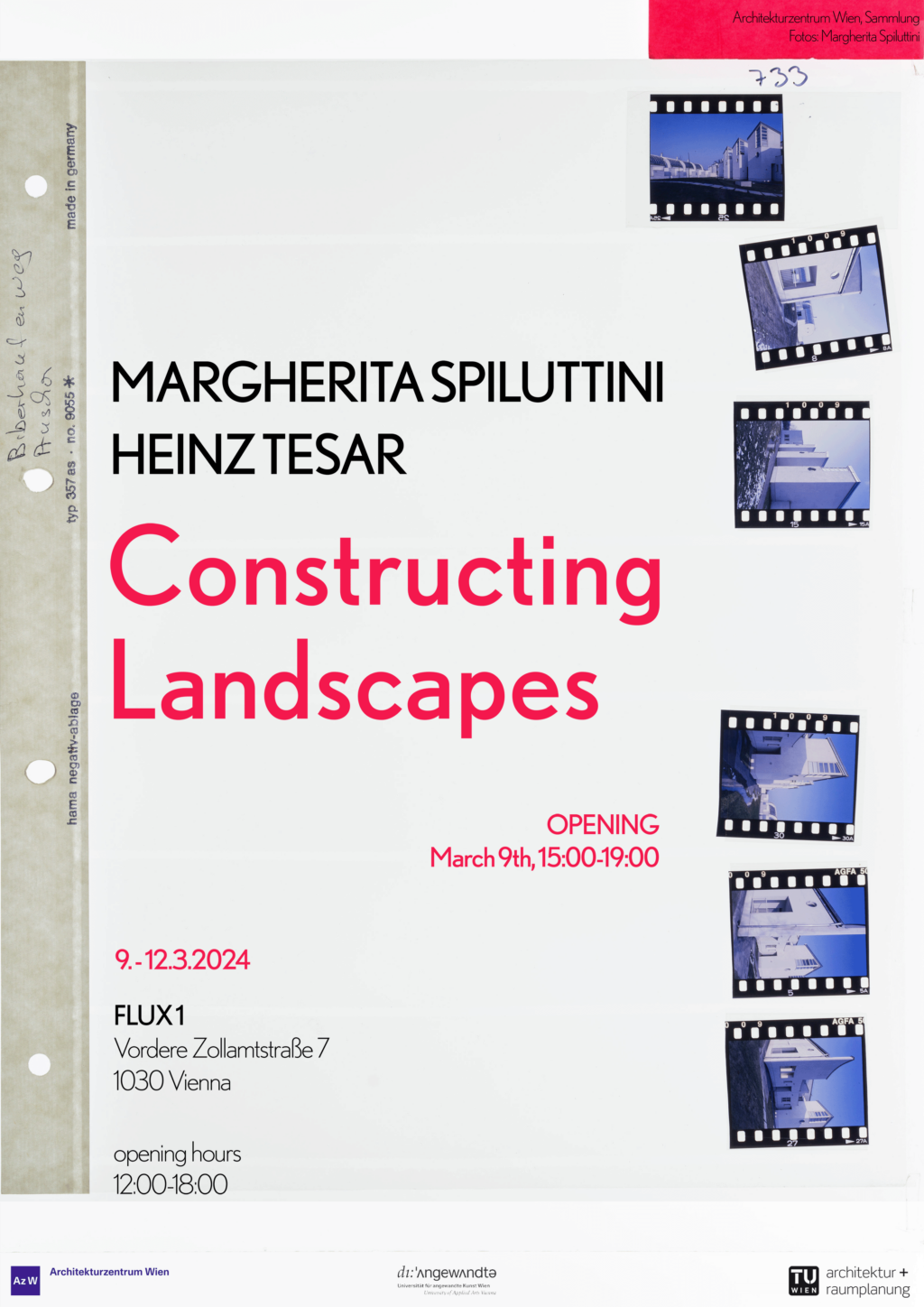
MAR 9, 2024
15:00
EXHIBITION:
CONSTRUCTING LANDSCAPES – Margherita Spiluttini & Heinz Tesar
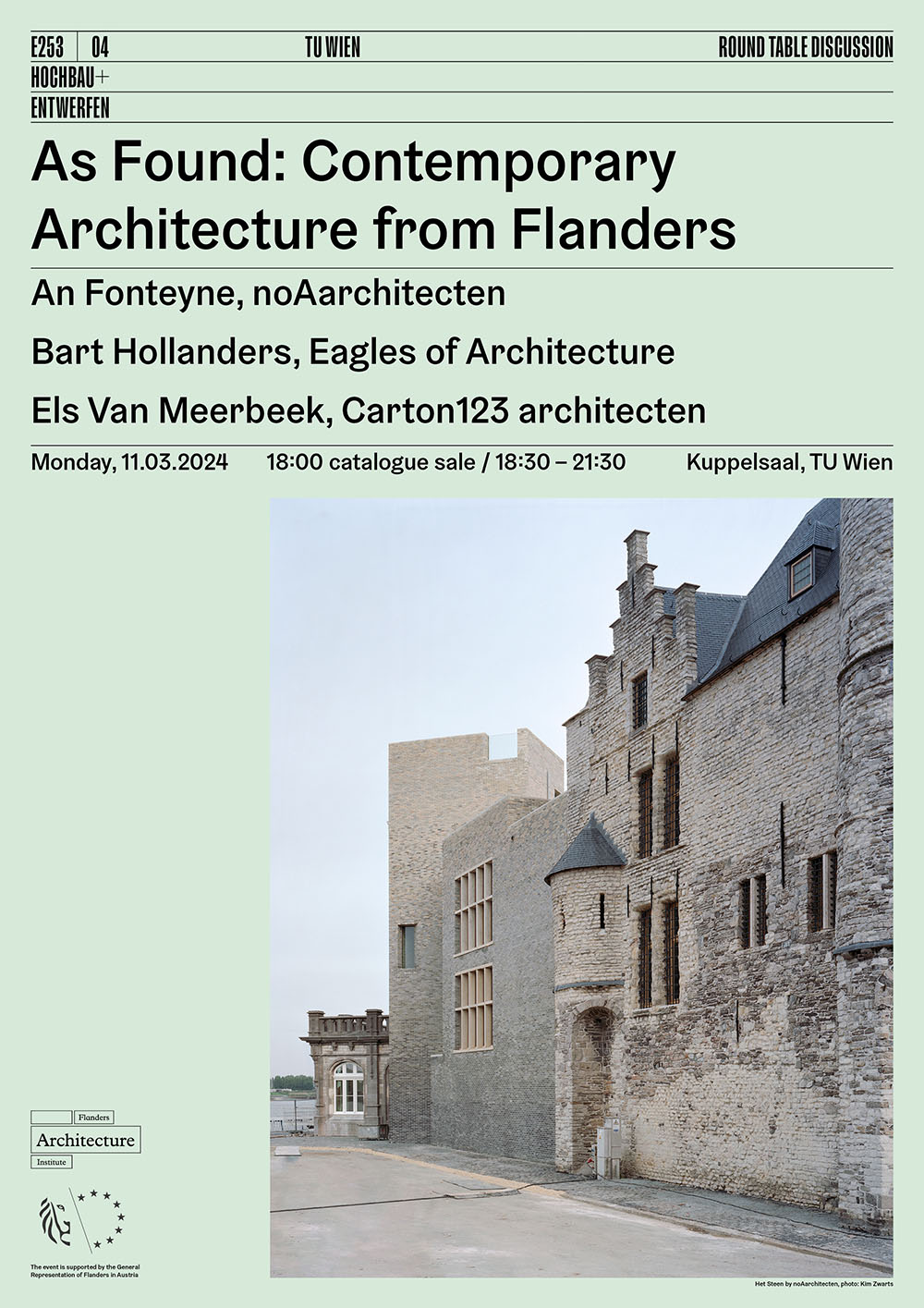
MAR 11, 2024
18:00
DISCUSSION:
An Fonteyne, Bart Hollanders, Els Van Meerbeek

MAR 13, 2024
18:30
LECTURE:
ELKE KRASNY
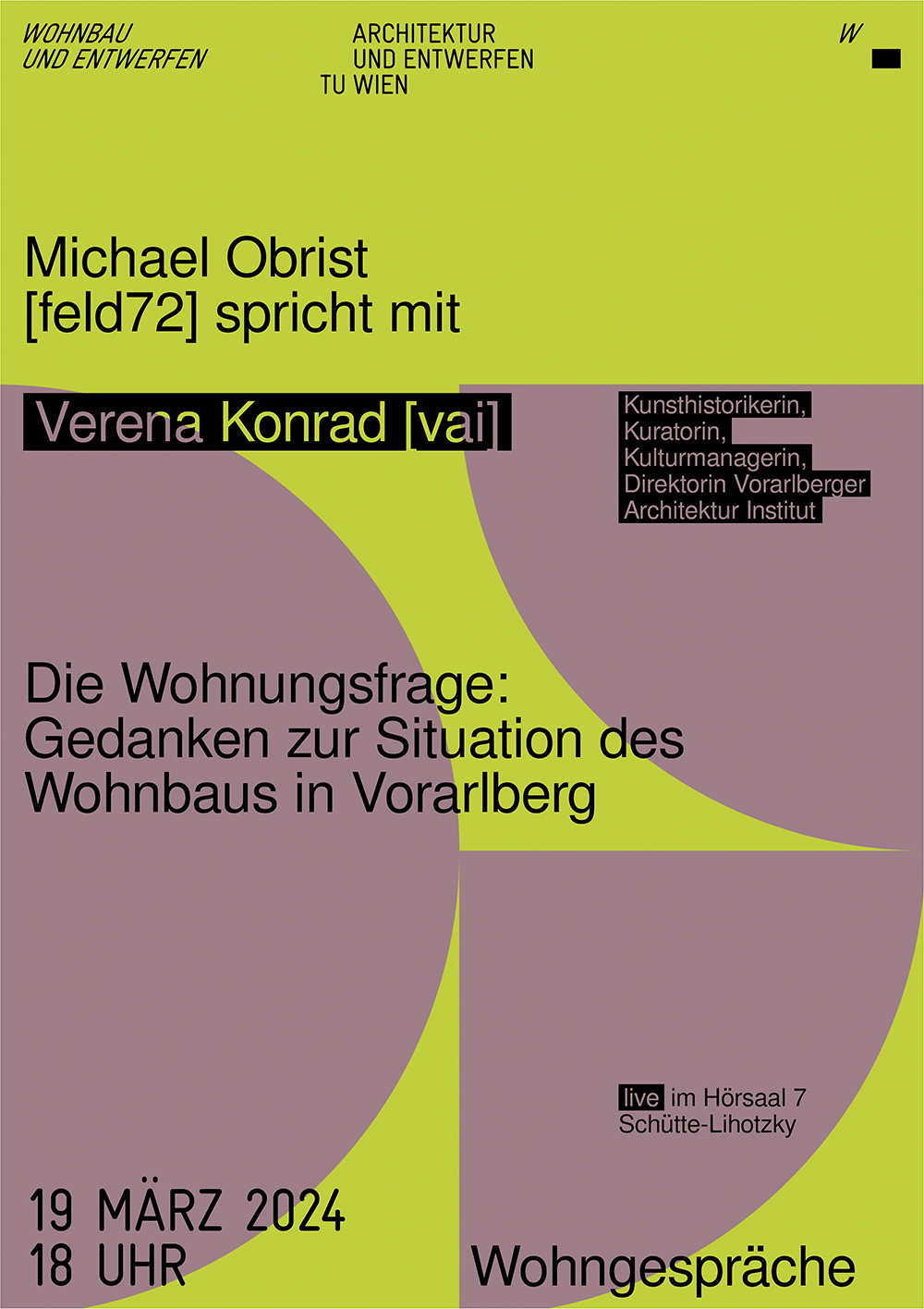
MAR 19, 2024
18:00
HOUSING TALKS:
VERENA KONRAD [vai]

APR 8, 2024
17:00
OPENING EVENT & LECTURE:
BIOFABRIQUE VIENNA
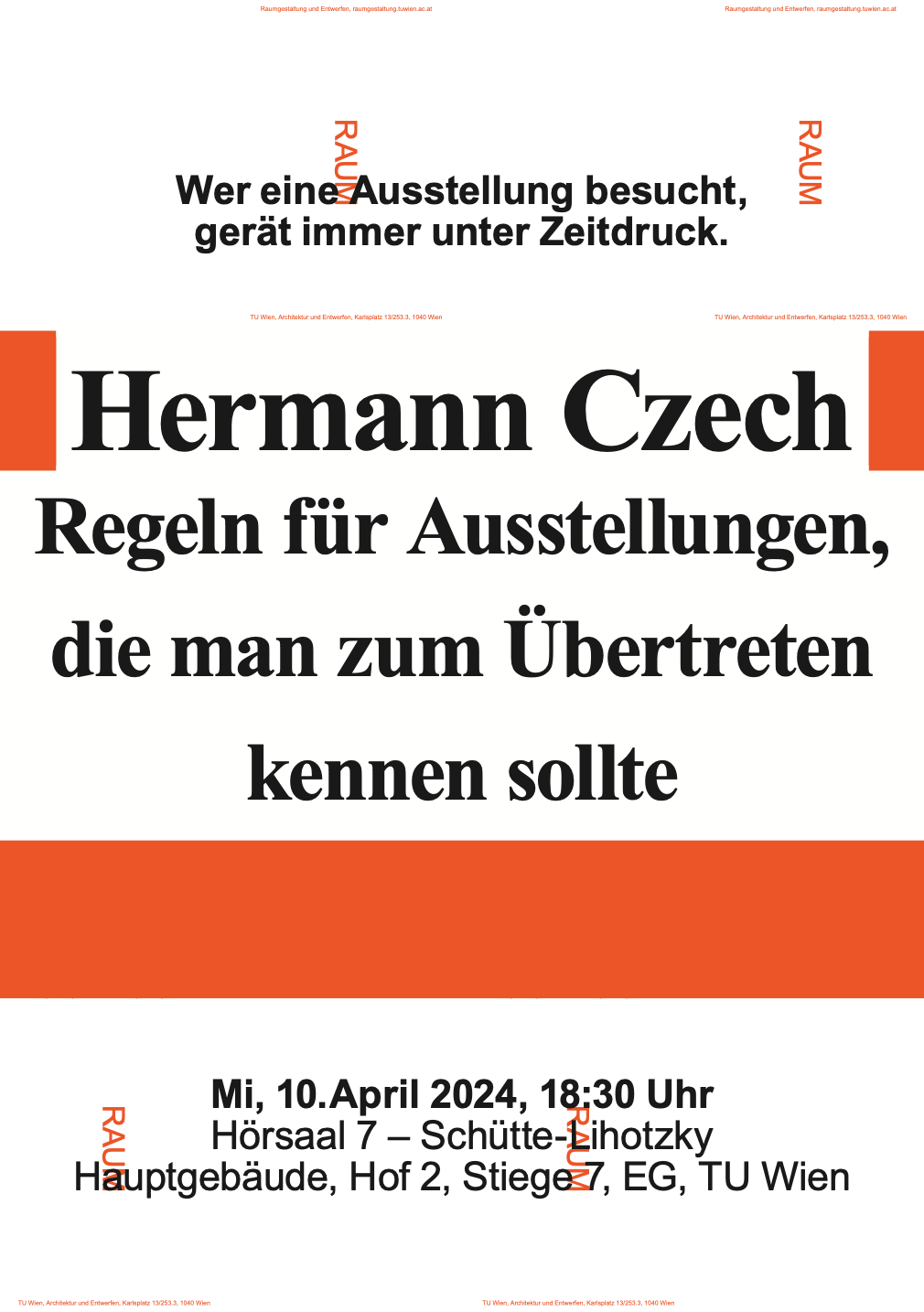
APR 10, 2024
18:30
LECTURE:
HERMANN CZECH

APR 15, 2024
18:00
HOUSING TALKS:
OLIVER ELSER
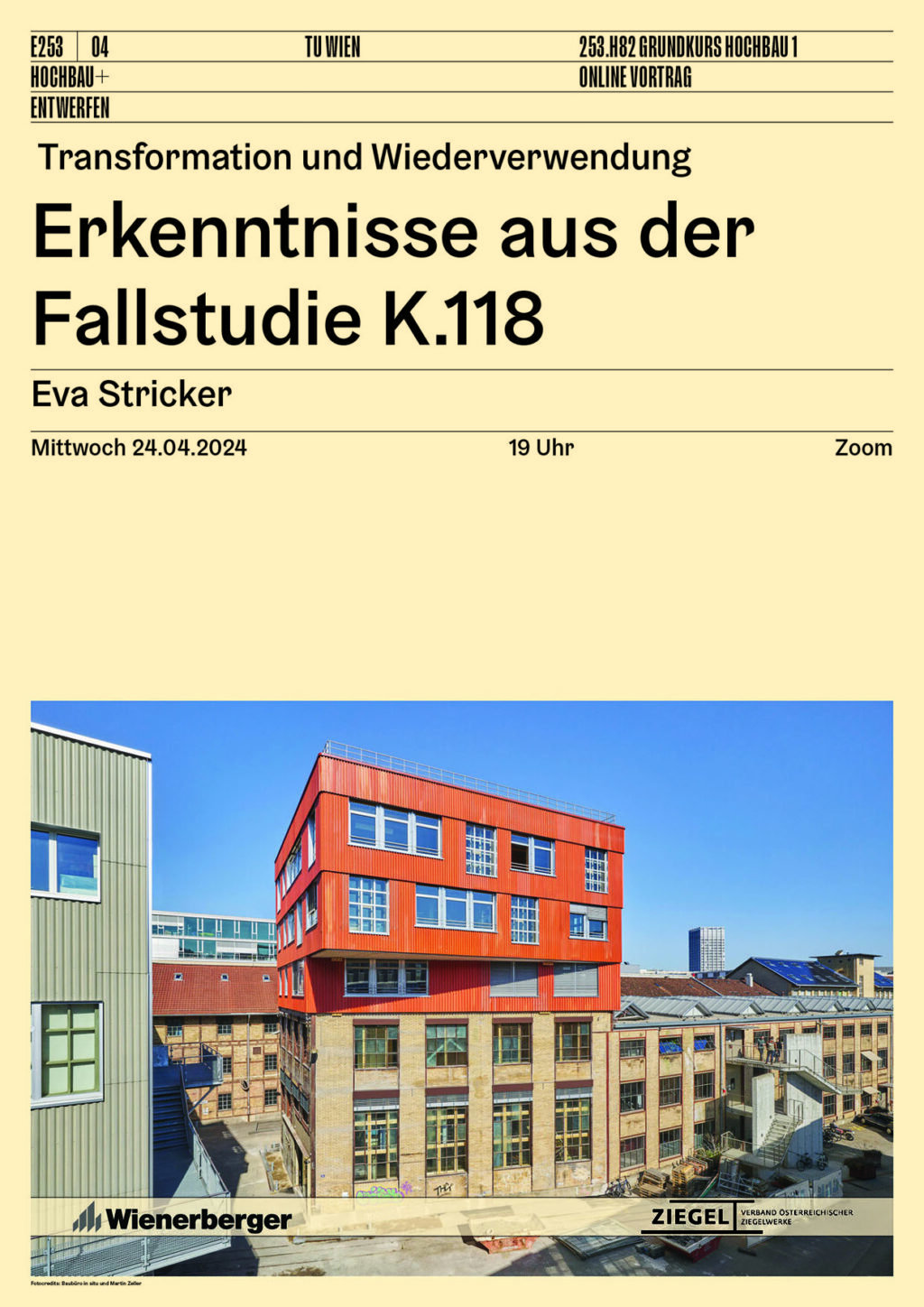
APR 24, 2024
19:00
LECTURE:
EVA STRICKER
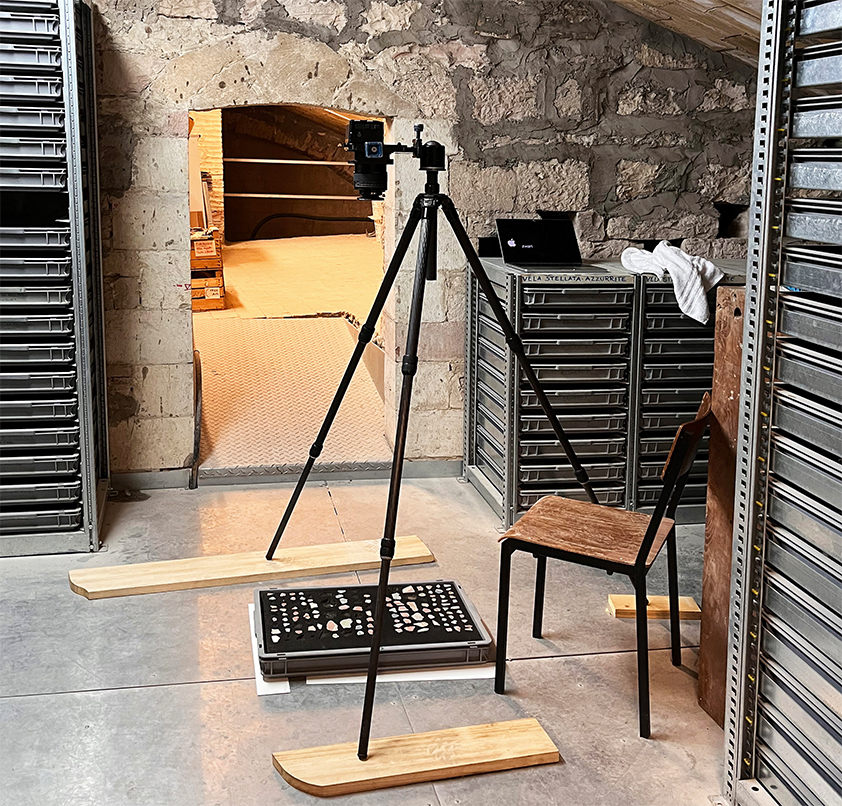
MAY 2, 2024
18:00
LECTURE:
BAS PRINCEN
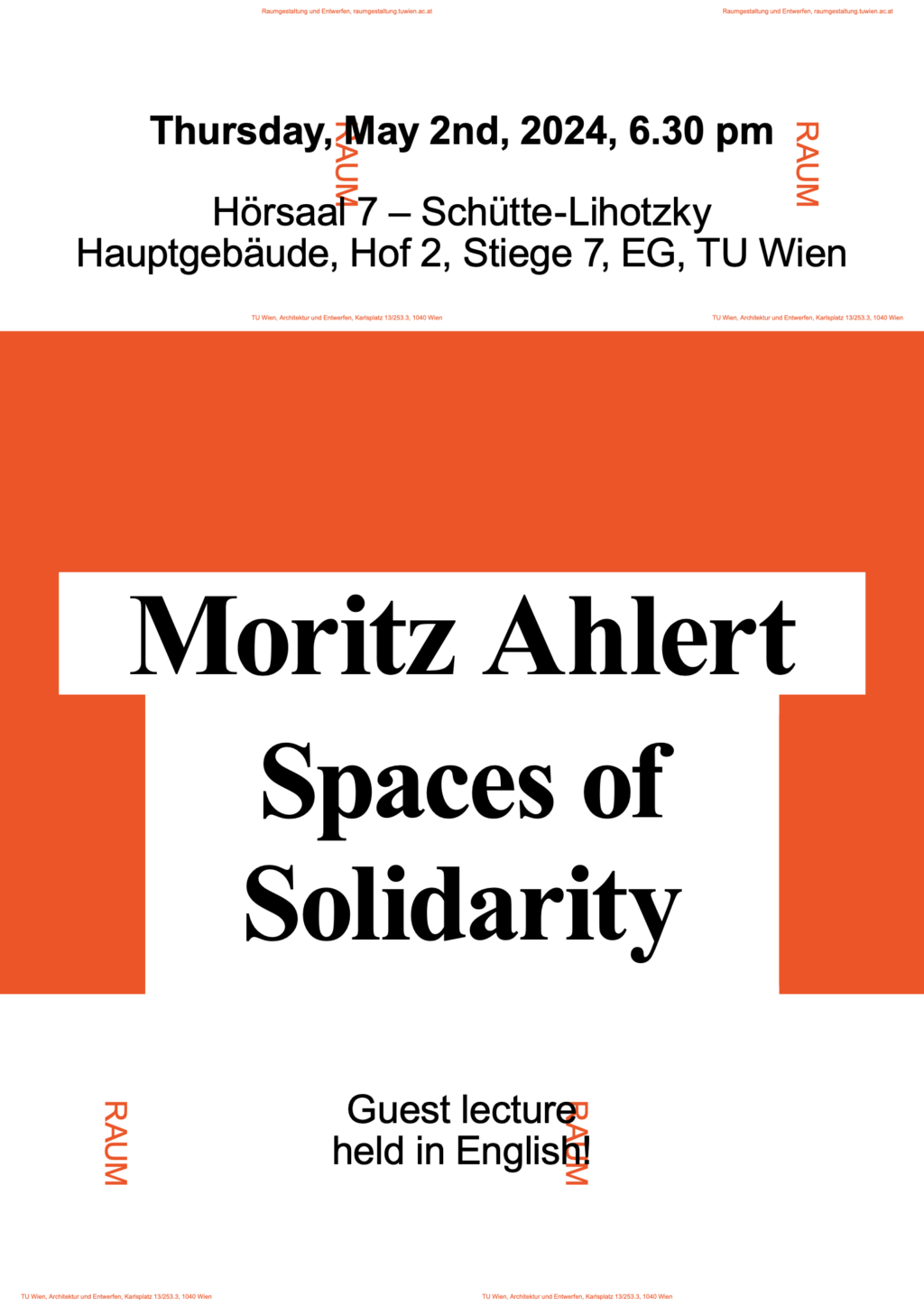
MAY 2, 2024
18:30
LECTURE:
MORITZ AHLERT
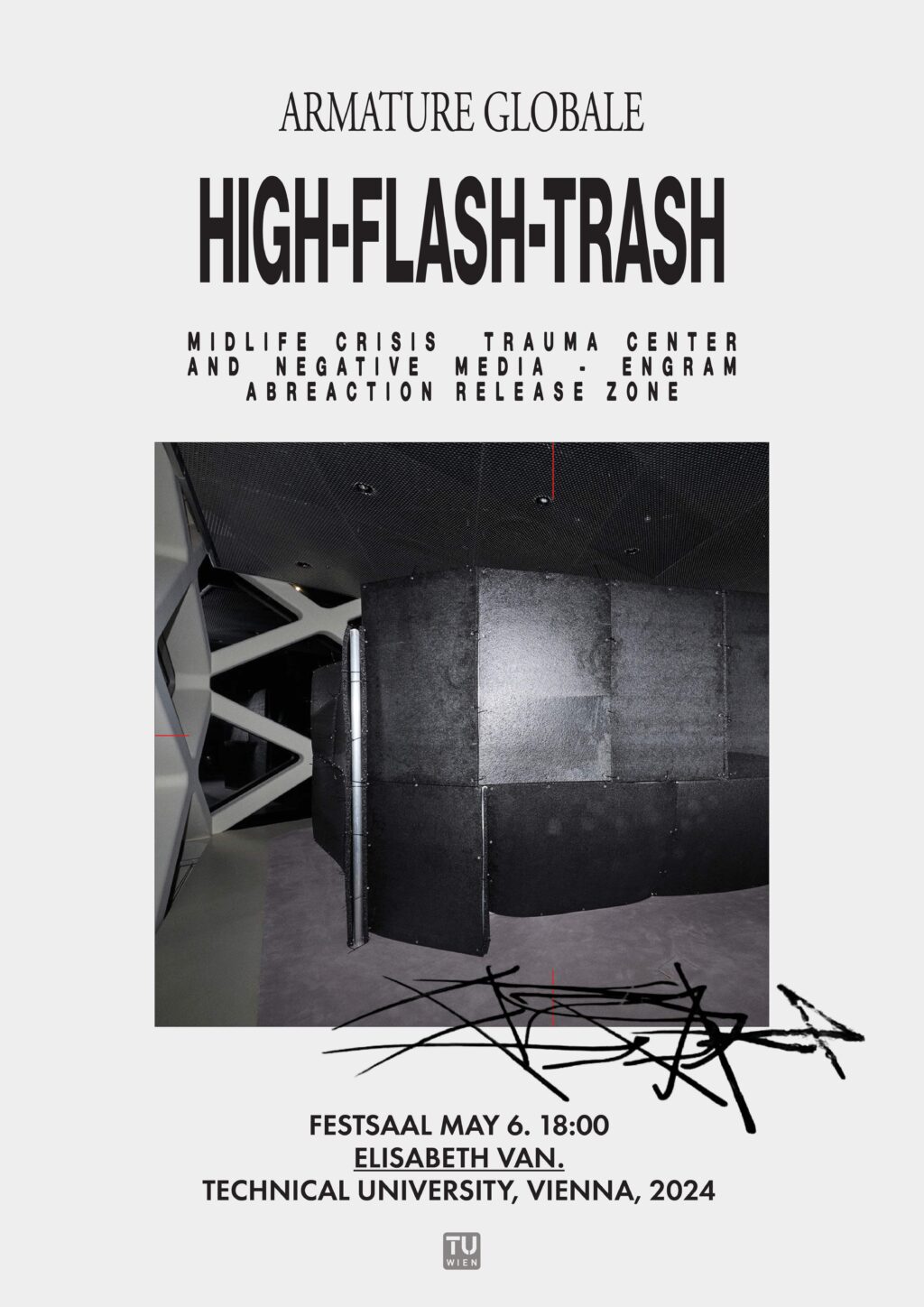
MAY 6, 2024
18:00
LECTURE:
LUIGI ALBERTO CIPPINI
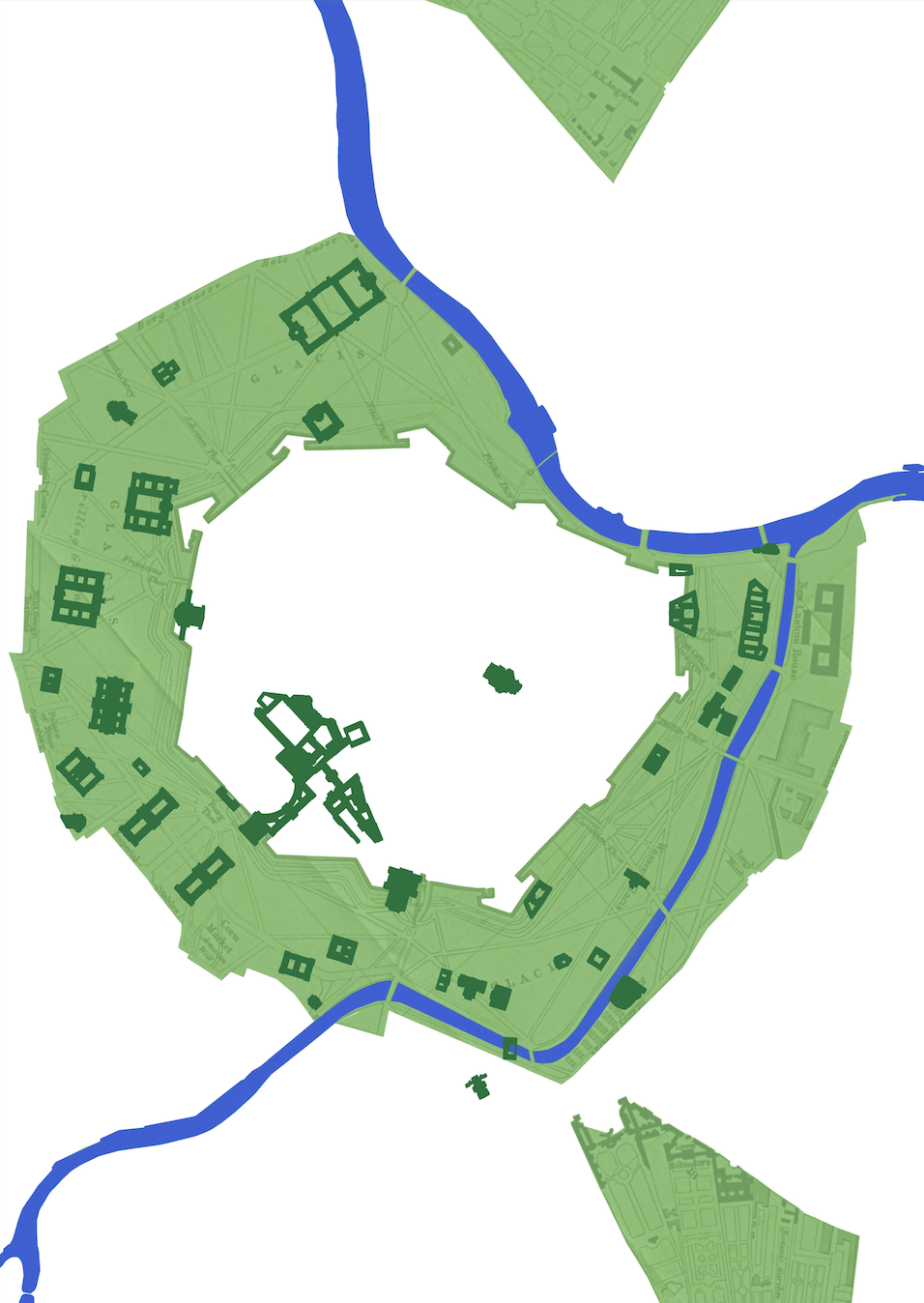
MAY 8, 2024
09:00
EXHIBITION:
EIN NEUES HAUS DER BOTANIK
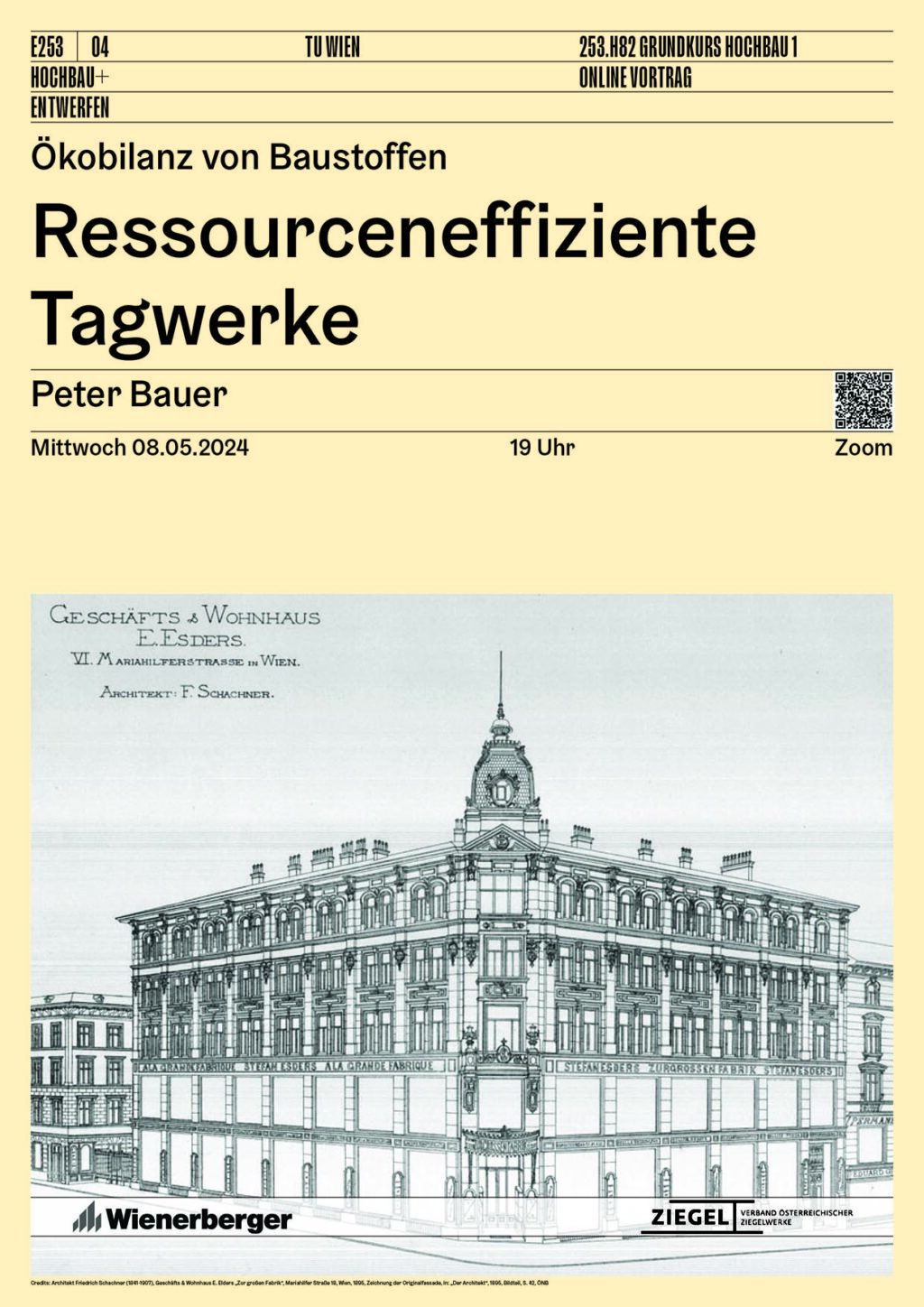
MAY 8, 2024
19:00
LECTURE:
PETER BAUER

MAY 16, 2024
19:00
LECTURE:
UMBERTO NAPOLITANO

MAY 23, 2024
12:15
EXHIBITION:
KARL KUPSKY-PREIS 2024

MAY 23, 2024
19:00
LECTURE:
FLORENCE LIPSKY

MAY 24, 2024
09:00
Exhibition:
Biofabrique Vienna
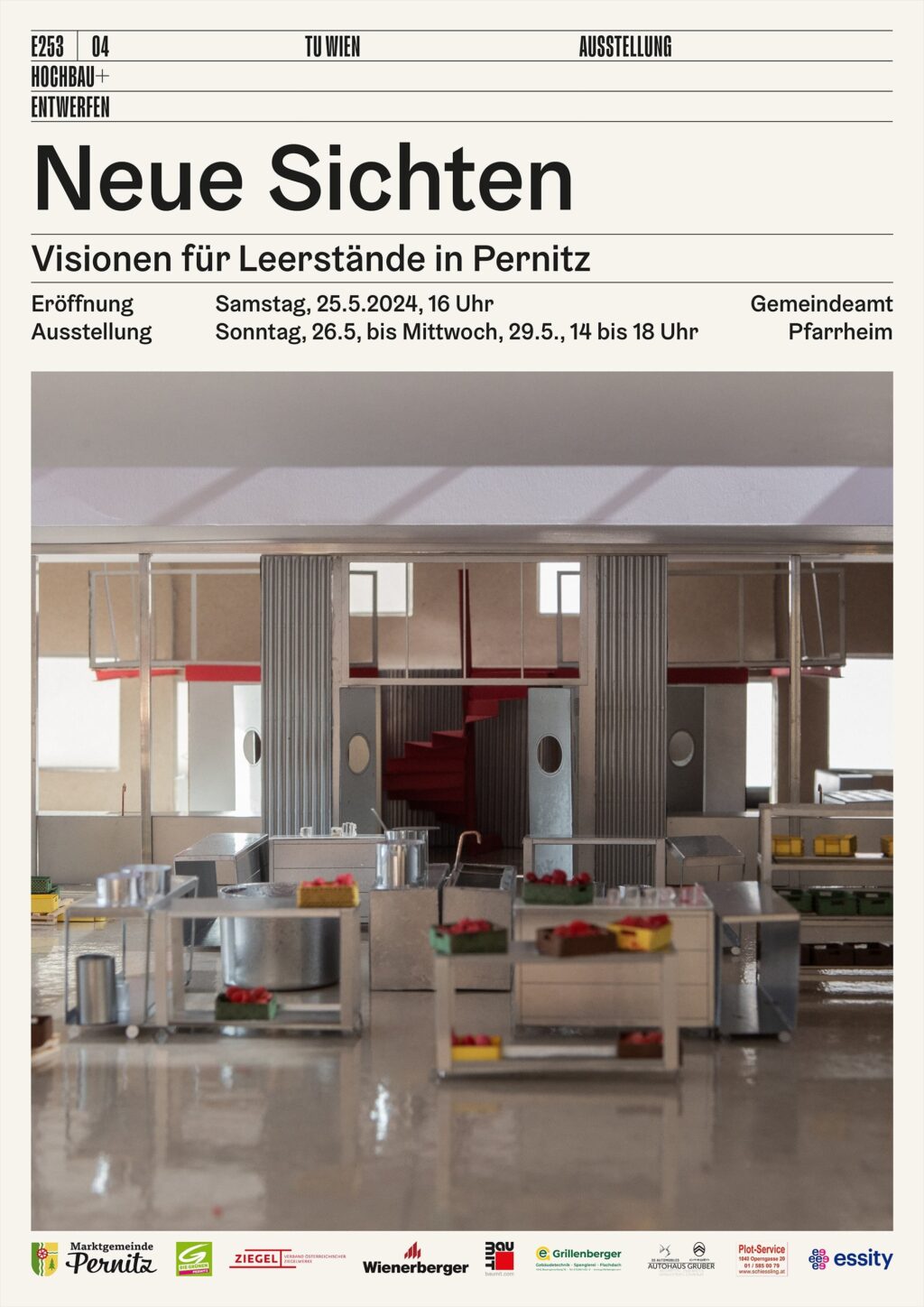
MAY 25, 2024
16:00
EXHIBITION OPENING:
NEUE SICHTEN
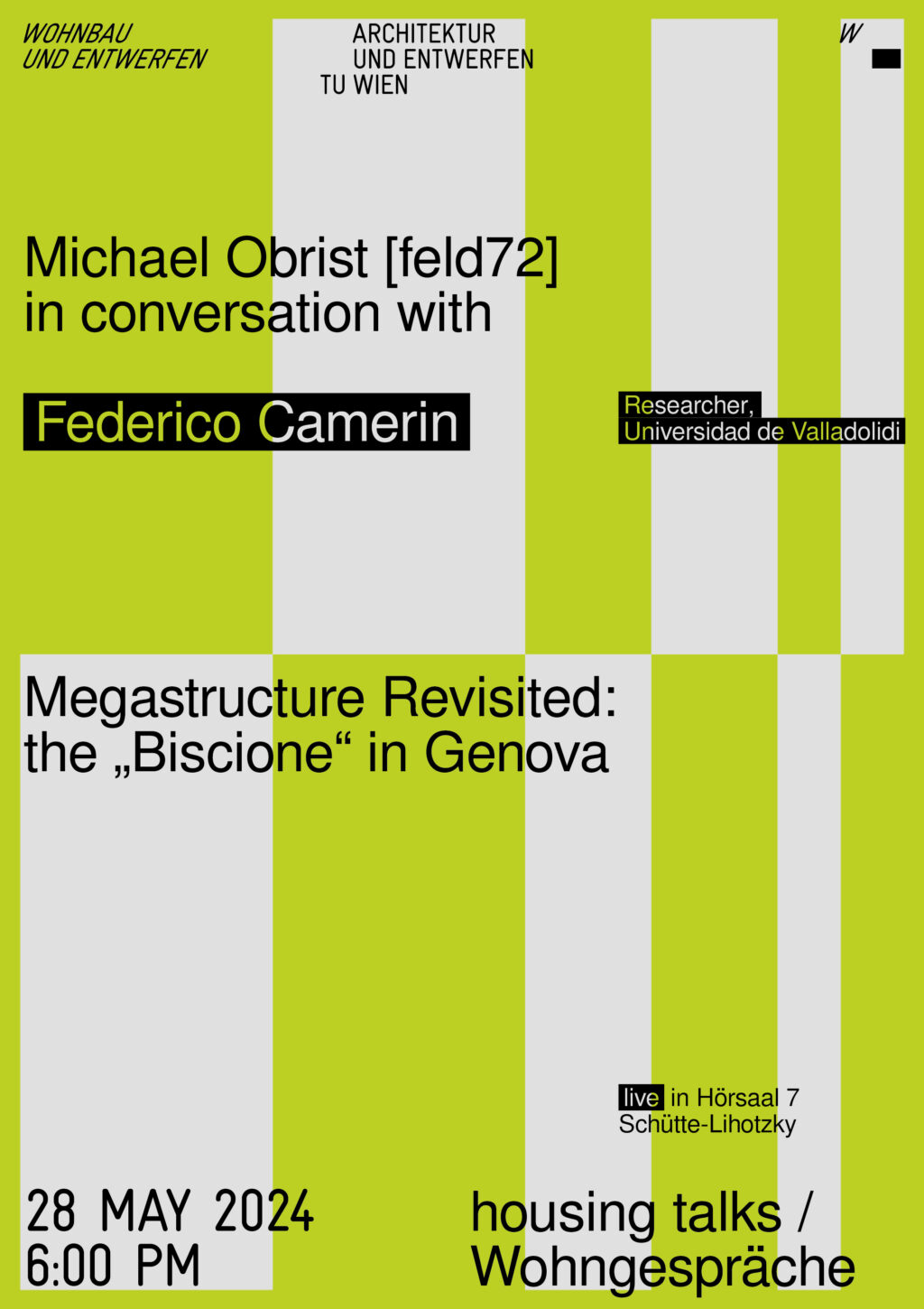
MAY 28, 2024
18:00
HOUSING TALKS:
FEDERICO CAMERIN
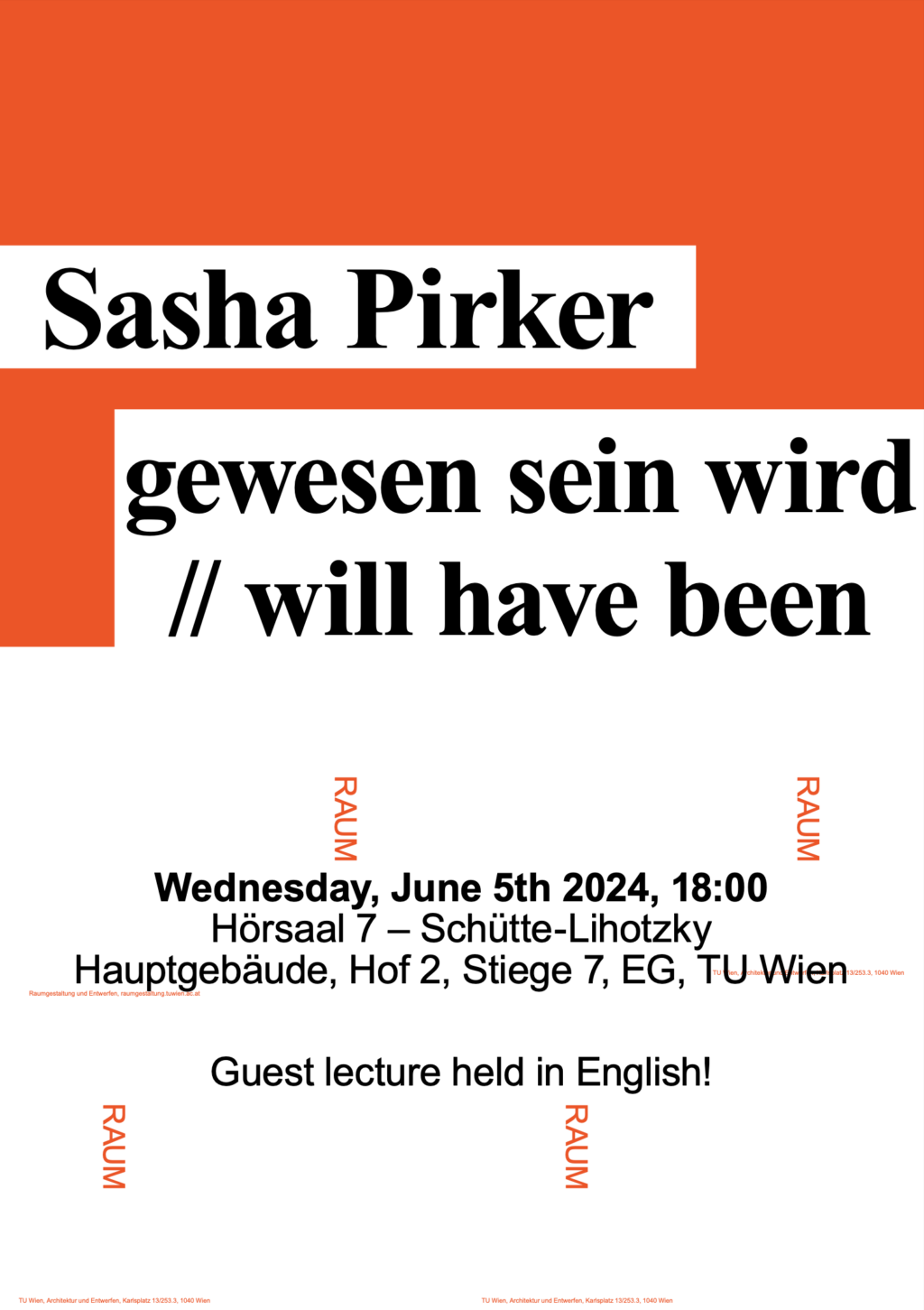
JUN 5, 2024
18:00
LECTURE:
SASHA PIRKER
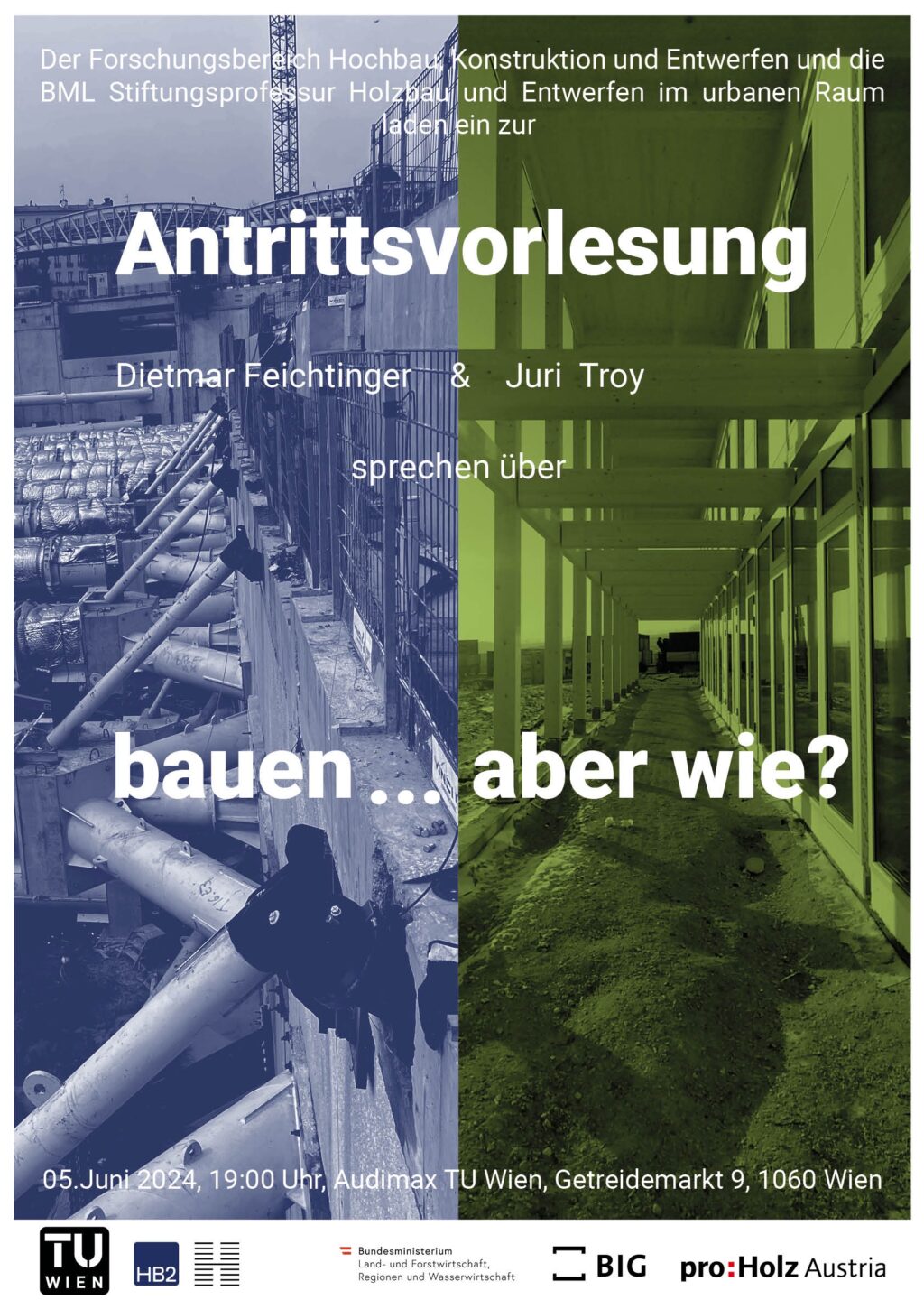
JUN 5, 2024
19:00
INAUGURAL LECTURE:
DIETMAR FEICHTINGER & JURI TROY

JUN 6, 2024
19:00
LECTURE:
JACQUELINE OSTY

JUN 7, 2024
13:30
SYMPOSIUM & EXHIBITION:
SPACES BETWEEN PLACES

JUN 7, 2024
18:00
LECTURE & DISCUSSION:
MARK INDERBITZIN
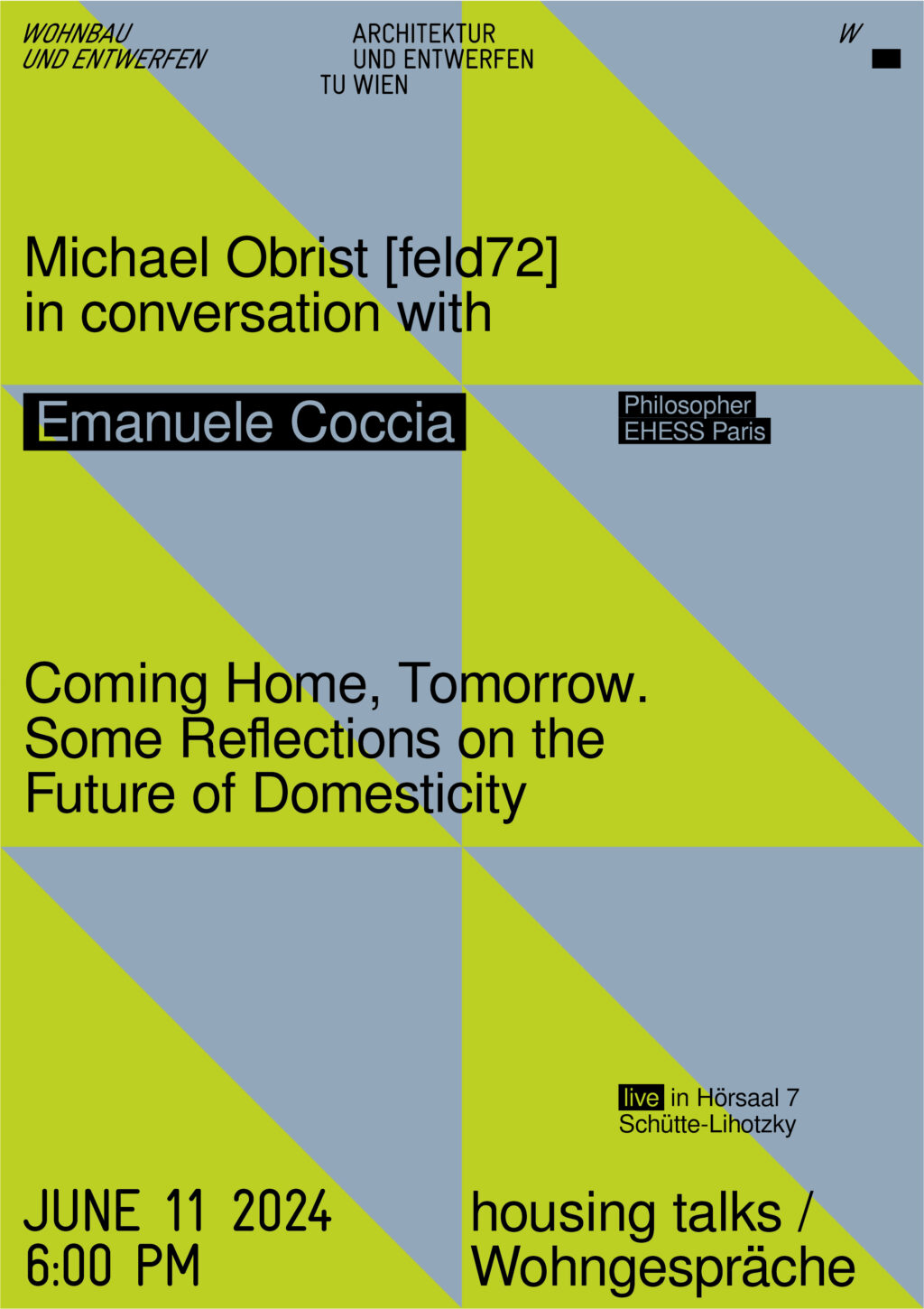
JUN 11, 2024
18:00
HOUSING TALKS: EMANUELE COCCIA

JUN 13, 2024
18:00
LECTURE & DISCUSSION:
LUISA LAMBRI
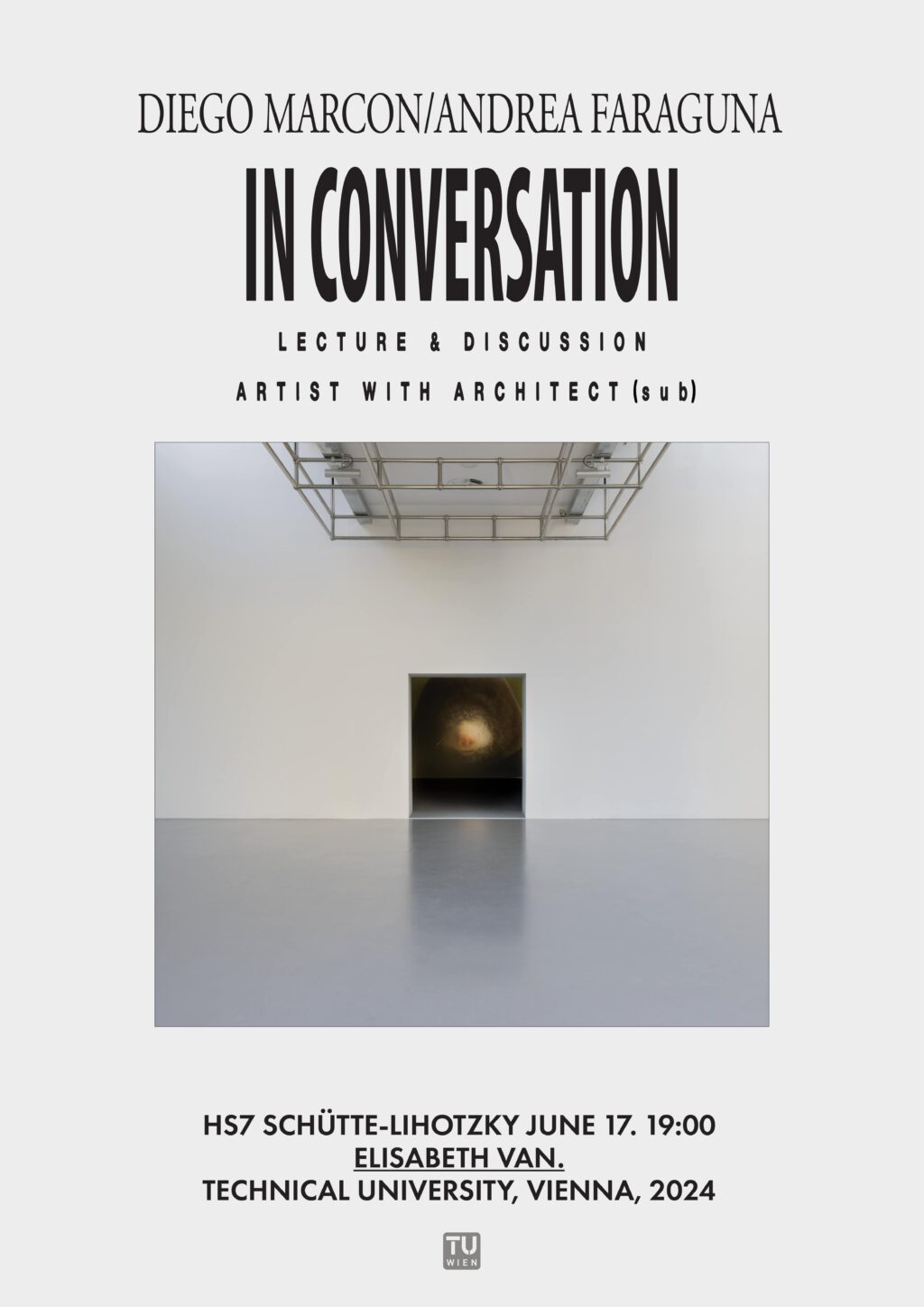
JUN 17, 2024
19:00
LECTURE & DISCUSSION:
DIEGO MARCON
ANDREA FARAGUNA

JUN 18, 2024
18:00
HOUSING TALKS: LISZ HIRN
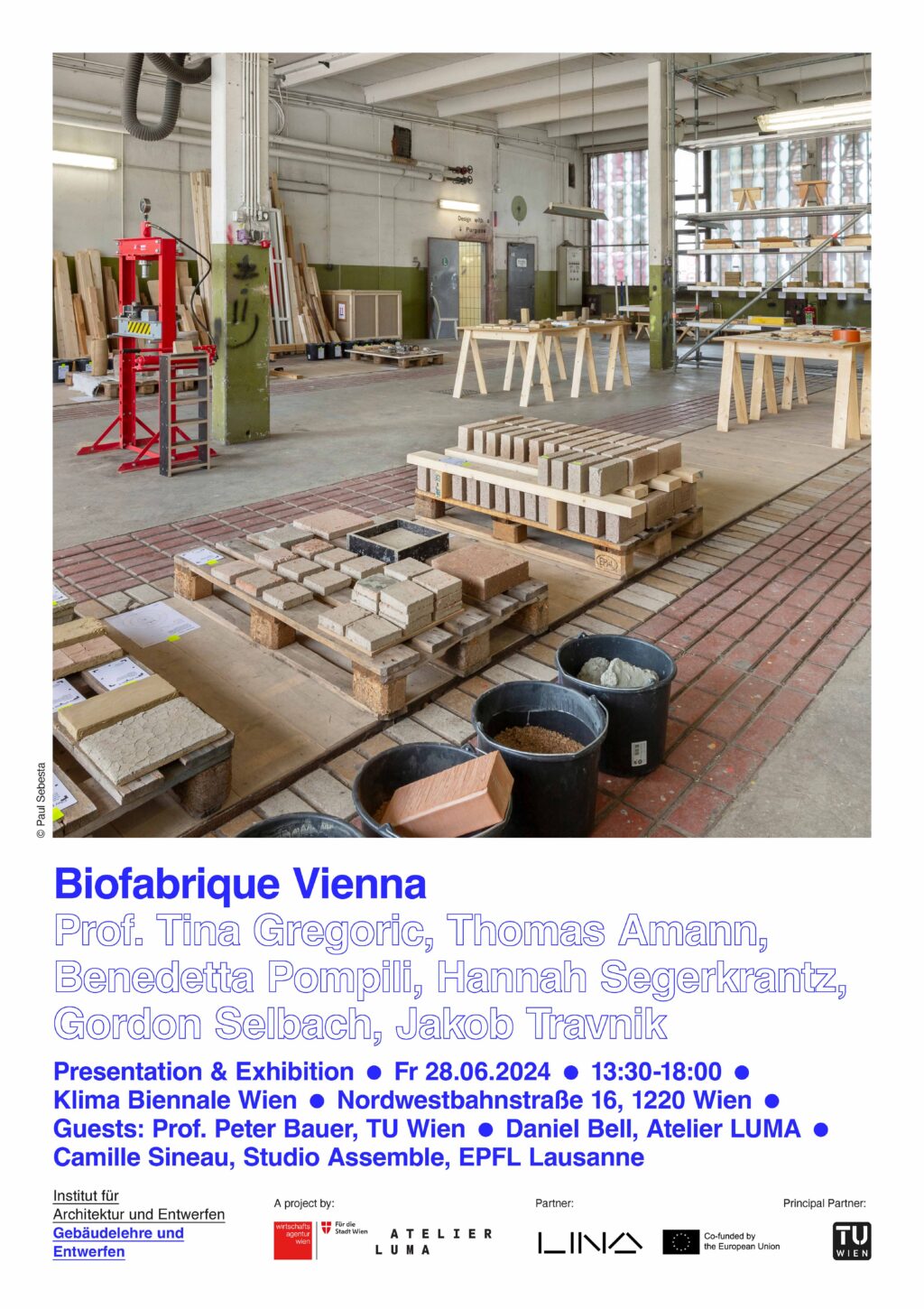
JUN 28, 2024
13:30
EXHIBITION:
BIOFABRIQUE VIENNA

JUL 10, 2024
17:00
CALL:
CURATION OF THE STUDENT'S NIGHT

MEGASTRUCTURE REVISITED: THE ‘BISCIONE‘ IN GENOVA
FEDERICO CAMERIN
IN CONVERSATION WITH MICHAEL OBRIST
TUE, 28.5.2024, 18:00 – HÖRSAAL 7, TU WIEN
Michael Obrist [feld72] in conversation with Federico Camerin about "Megastructure revisited: The „Biscione“ in Genova - The spontaneous shedding of the snake's skin. The unplanned revitalization of the Forte Quezzi social housing neighborhood."
This research examines the spontaneous regeneration trends experienced over the last two decades in the social housing neighborhood called Biscione ("Gross Snake"), officially called the "Forte Quezzi INA-Casa complex," located in the Forte Quezzi neighborhood on the northern outskirts of the Italian city of Genoa. The autonomous social housing neighborhood was designed by a group led by the architect Luigi Carlo Daneri between 1956 and 1958 and constructed between 1960 and 1968. It comprises 850 dwellings in five linear blocks, with a total capacity to house 4,500 people. As in other cases of social housing neighborhoods built under the post-World War II INA-Casa program, the complex has experienced a decline in quality of life (e.g., drug use and petty crime, and a reduction in the number of residents) and underinvestment by the municipality since its inauguration. In light of an absent policy implemented by the City Council, several factors trigger a spontaneous revitalization of the neighborhood and this talk scrutinizes them to understand the lessons learned and future trends.
Federico Camerin, with a city planner degree and a European postgraduate degree in Planning and Policies for Cities, Environment and Landscape from the Università Iuav di Venezia (2014), Federico Camerin was awarded in 2014–15 and 2016–17 with two fellow research grants at the same university. He was successively an Early Stage Researcher at the Marie Skłodowska-Curie Action-Innovative Training Networks ‘UrbanHist’ (European Joint Doctorate). In 2020, he achieved a double degree of Doctor en Arquitectura and PhD, jointly awarded by the Universidad de Valladolid (UVa, Spain) and Bauhaus-Universität Weimar (BUW, Germany). A former post-doc fellow in urban planning at Iuav (2021), he is currently a post-doc researcher ‘Margarita Salas’ for UVa and Universidad Politécnica de Madrid (UPM) (2022–24).
wohnbau.tuwien.ac.at/de/wohngespraeche